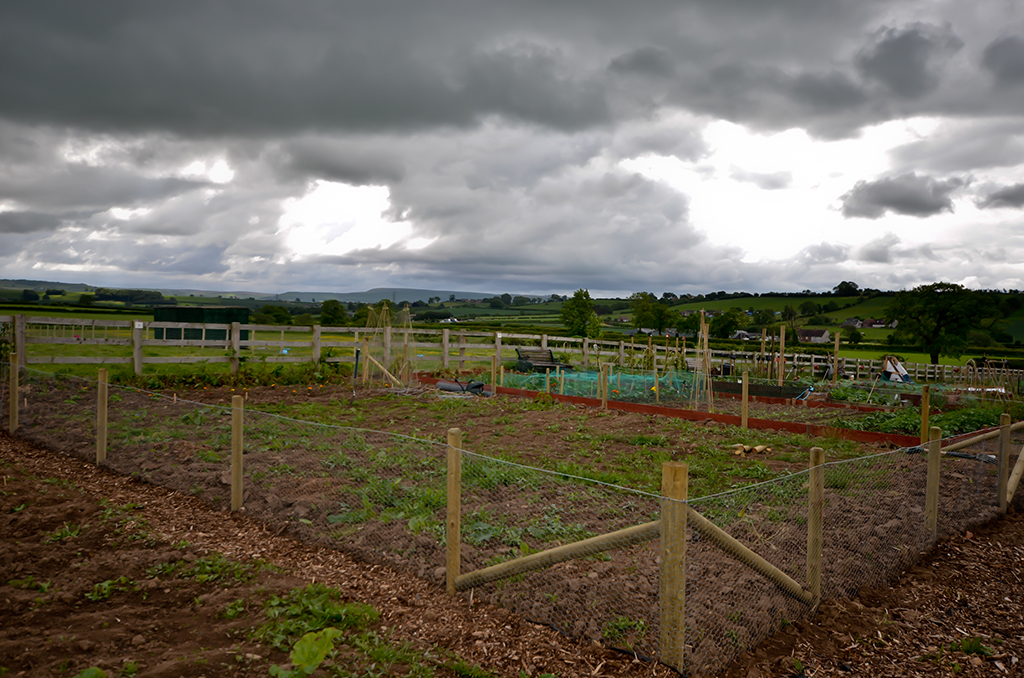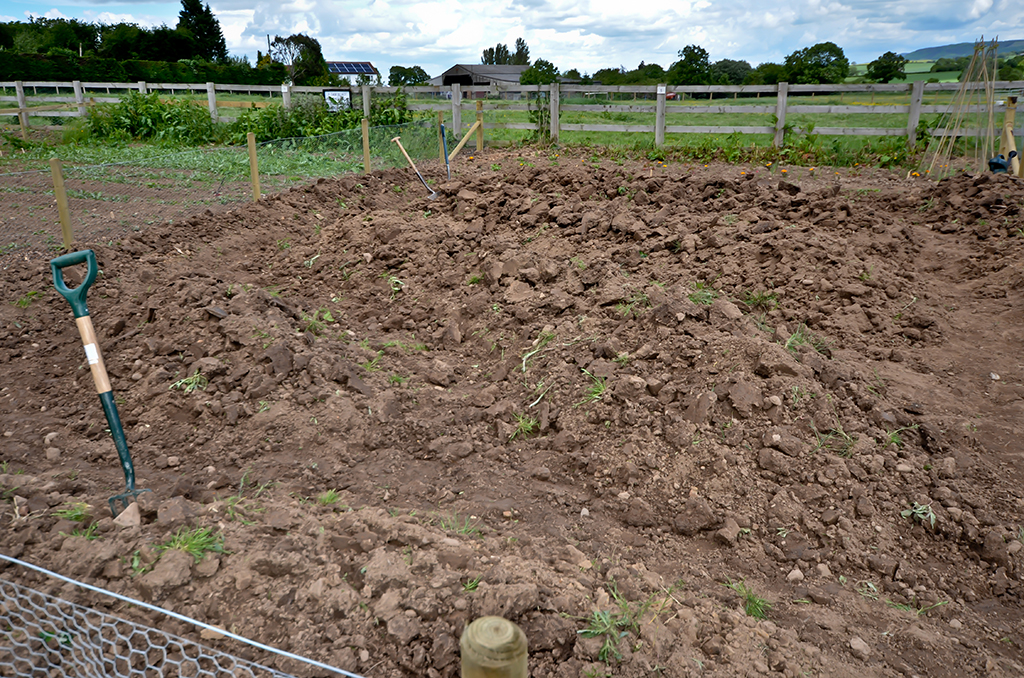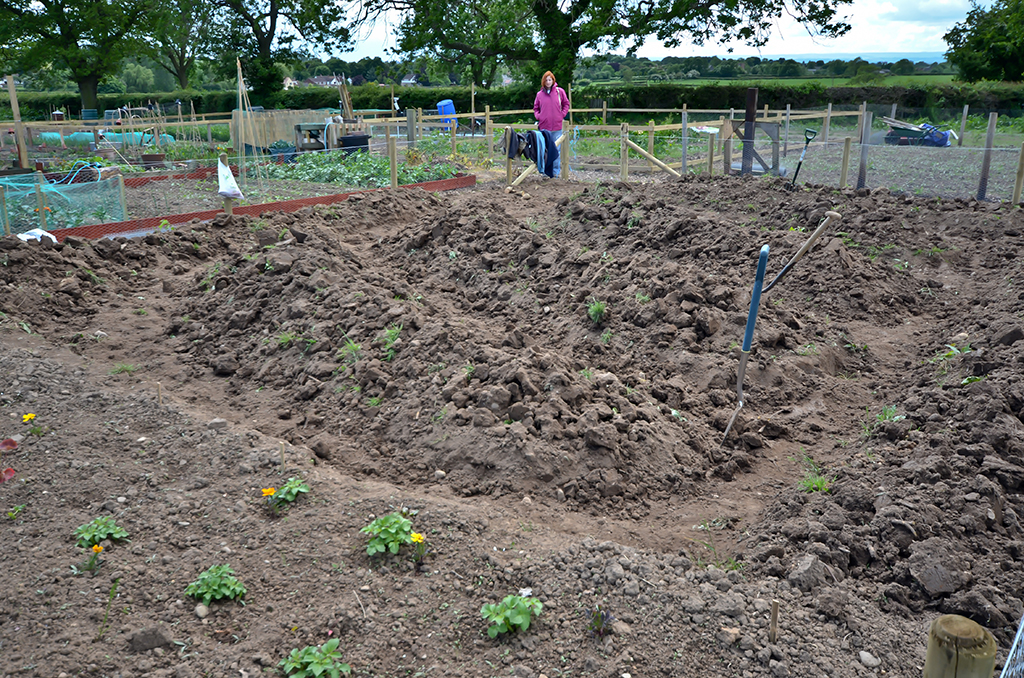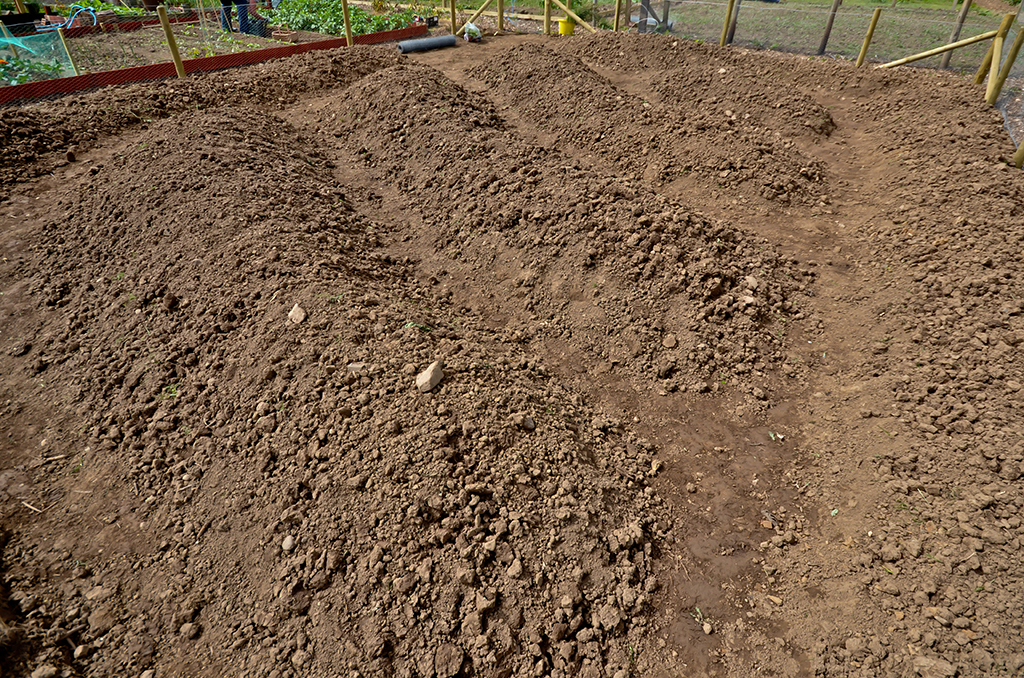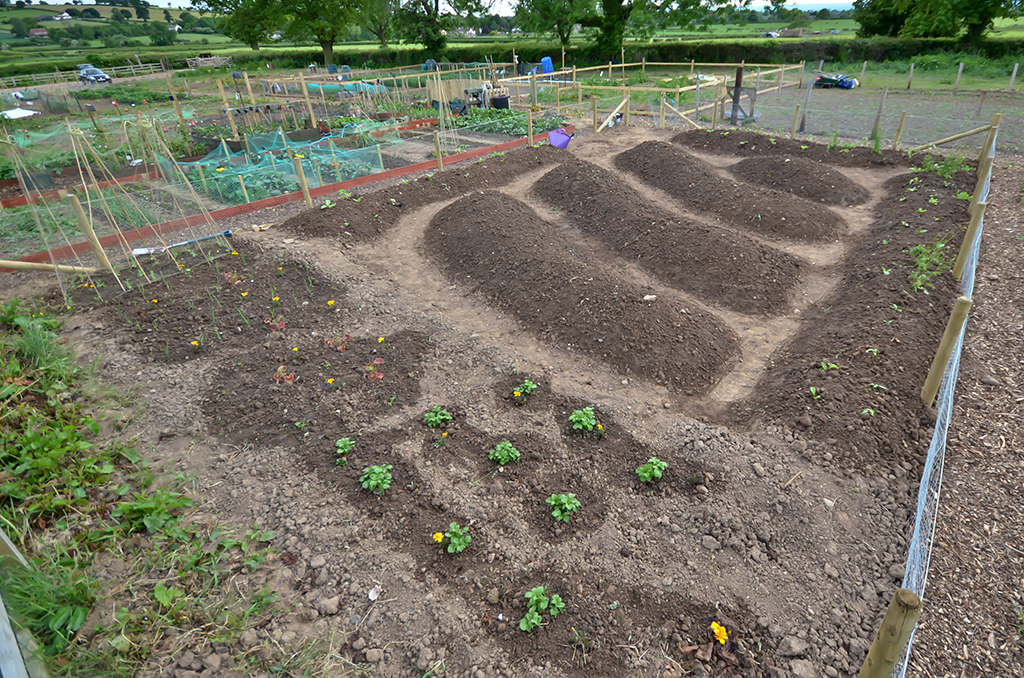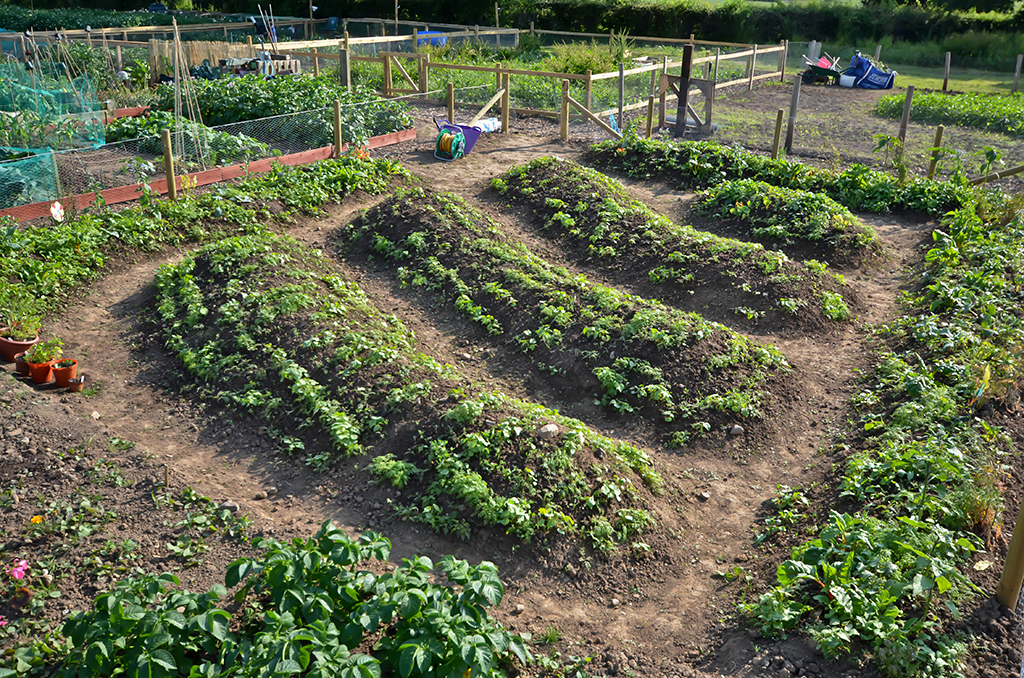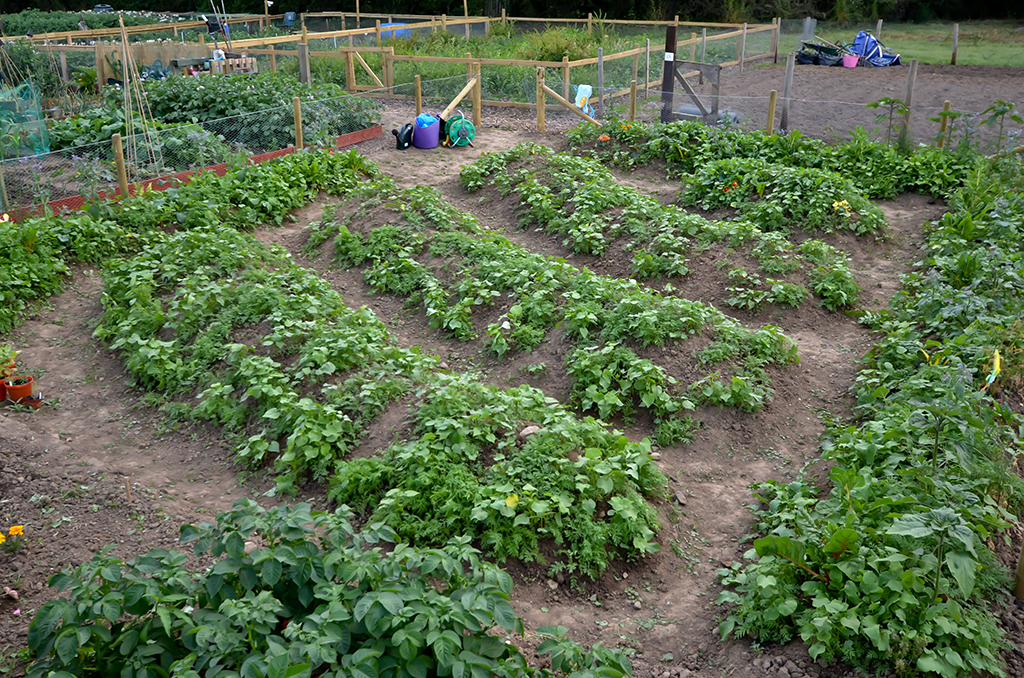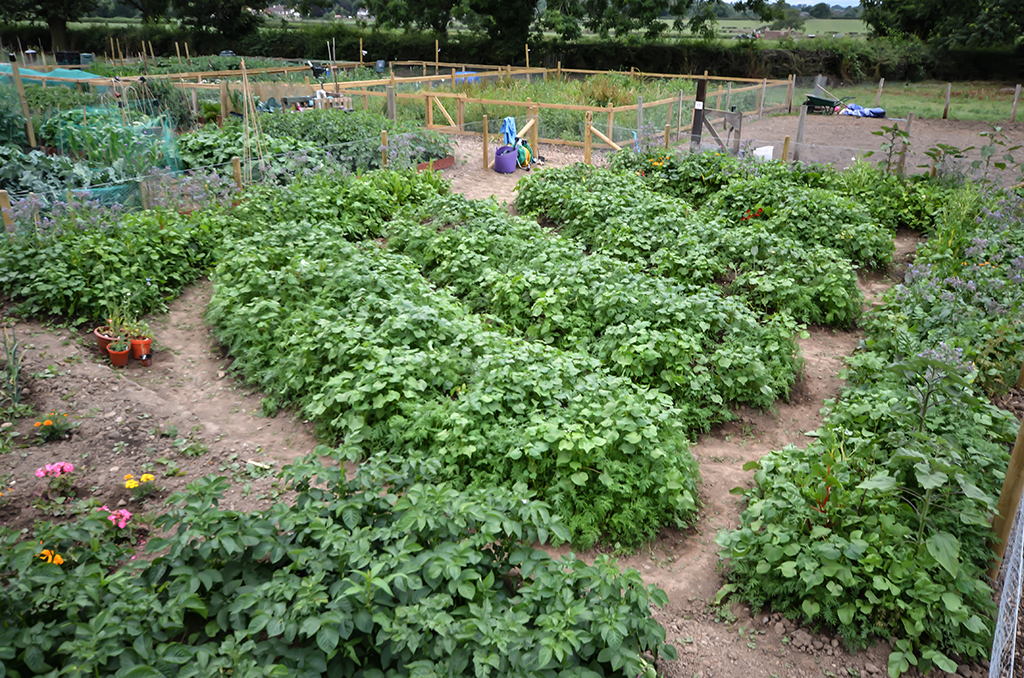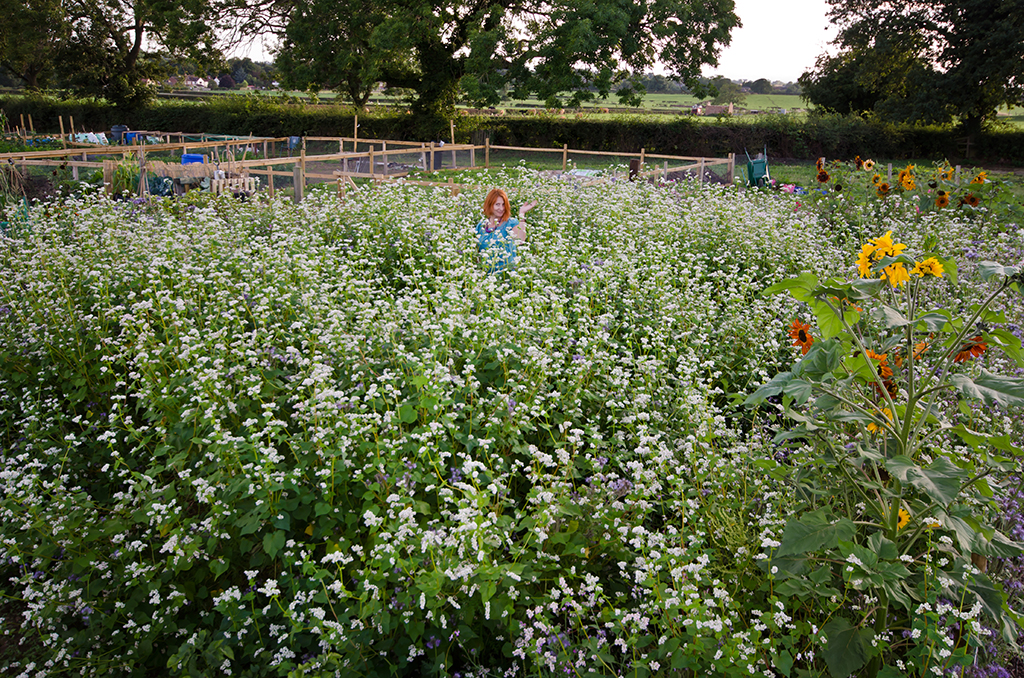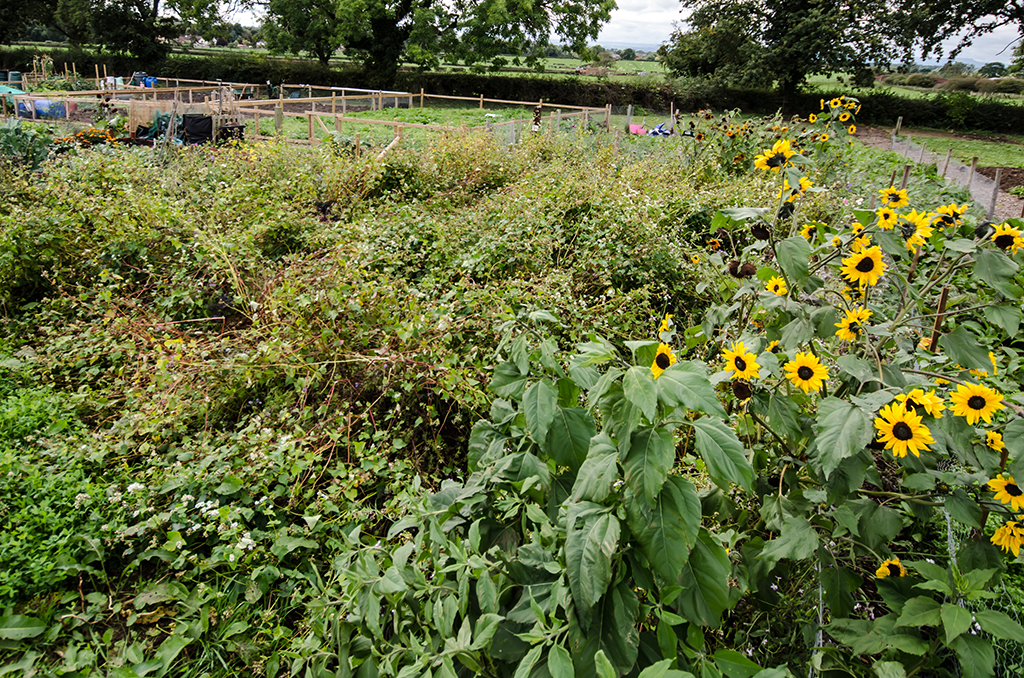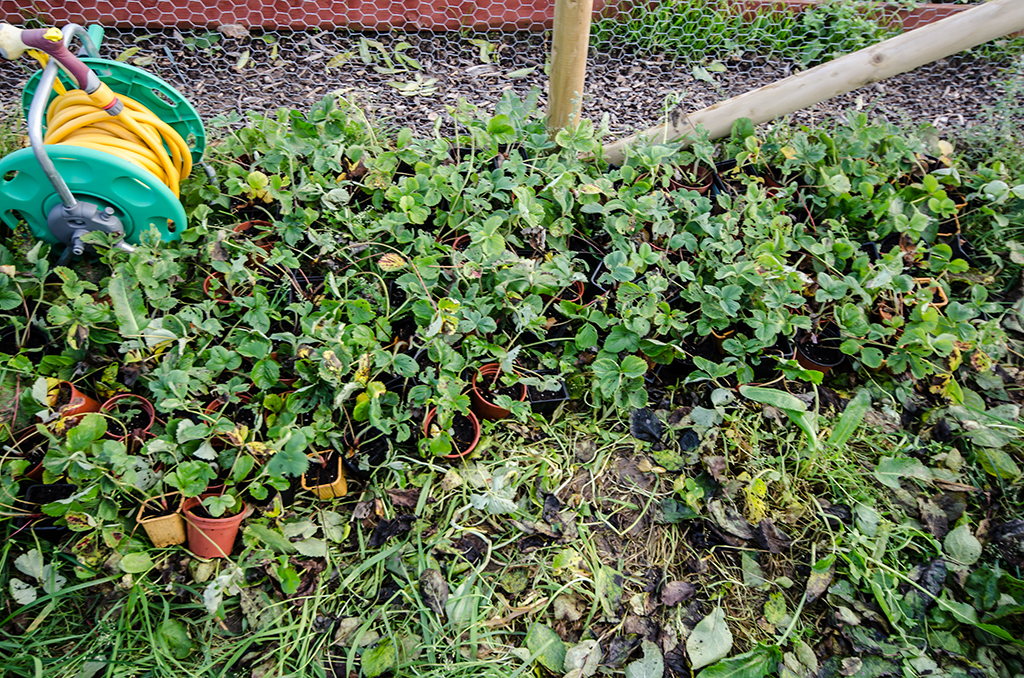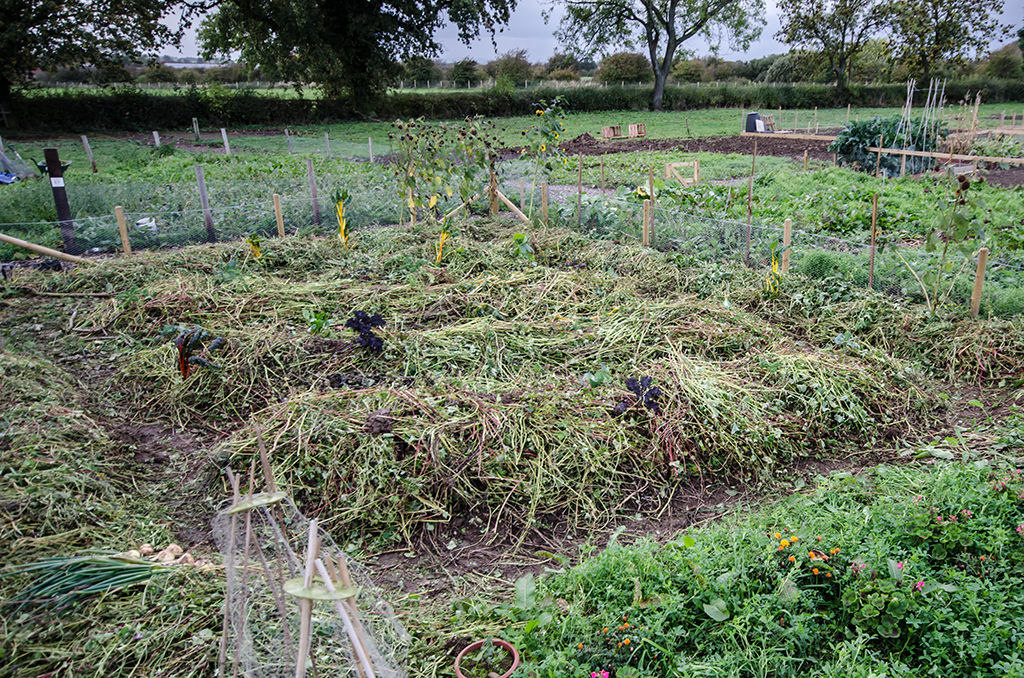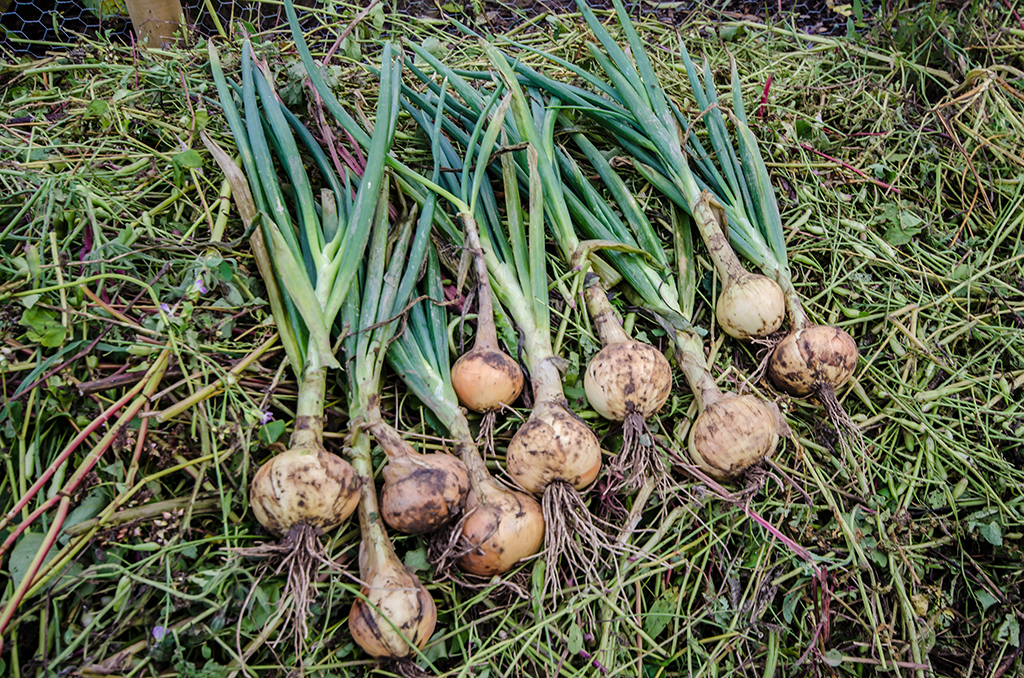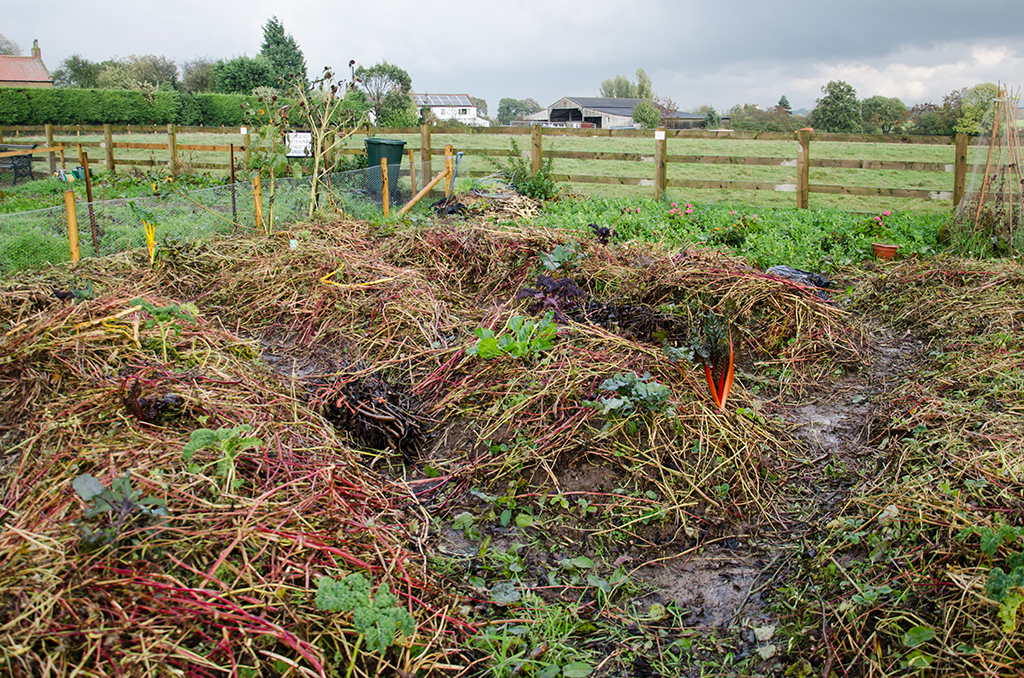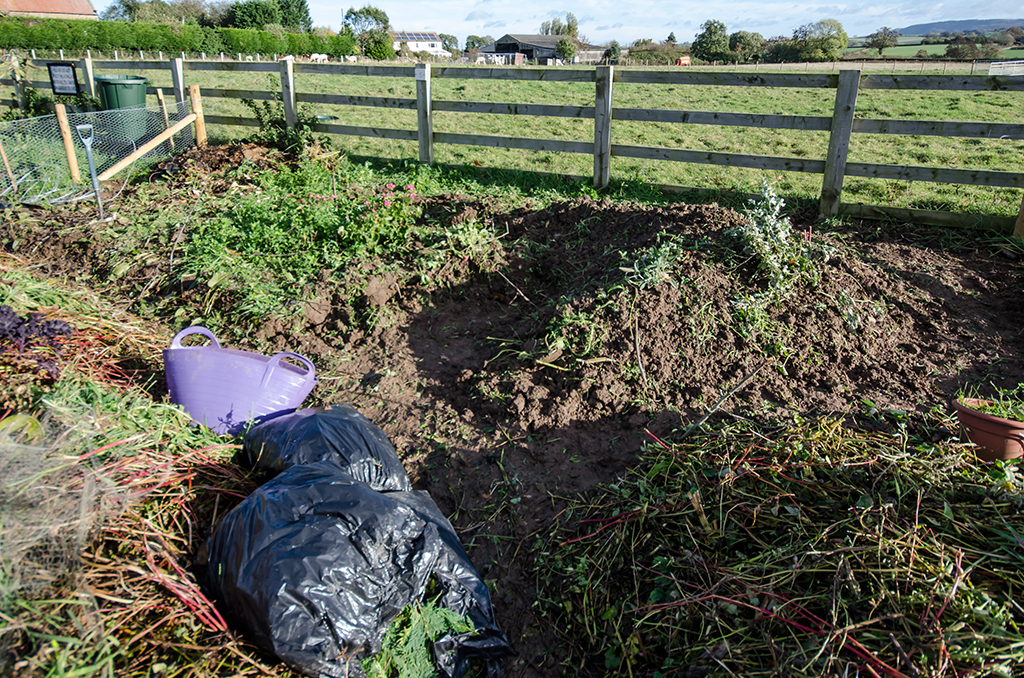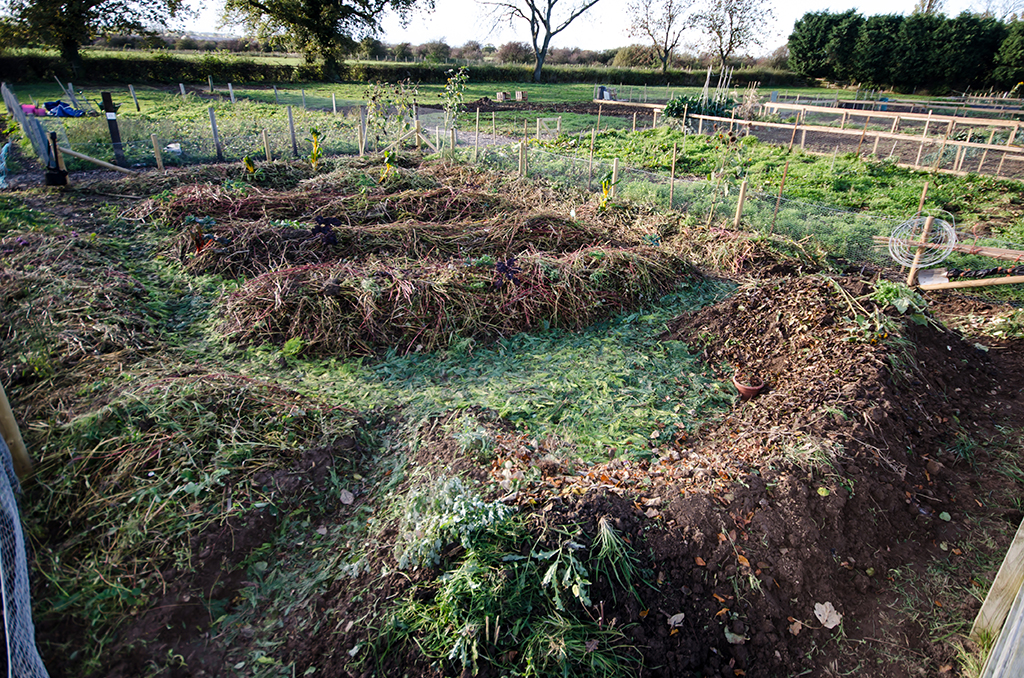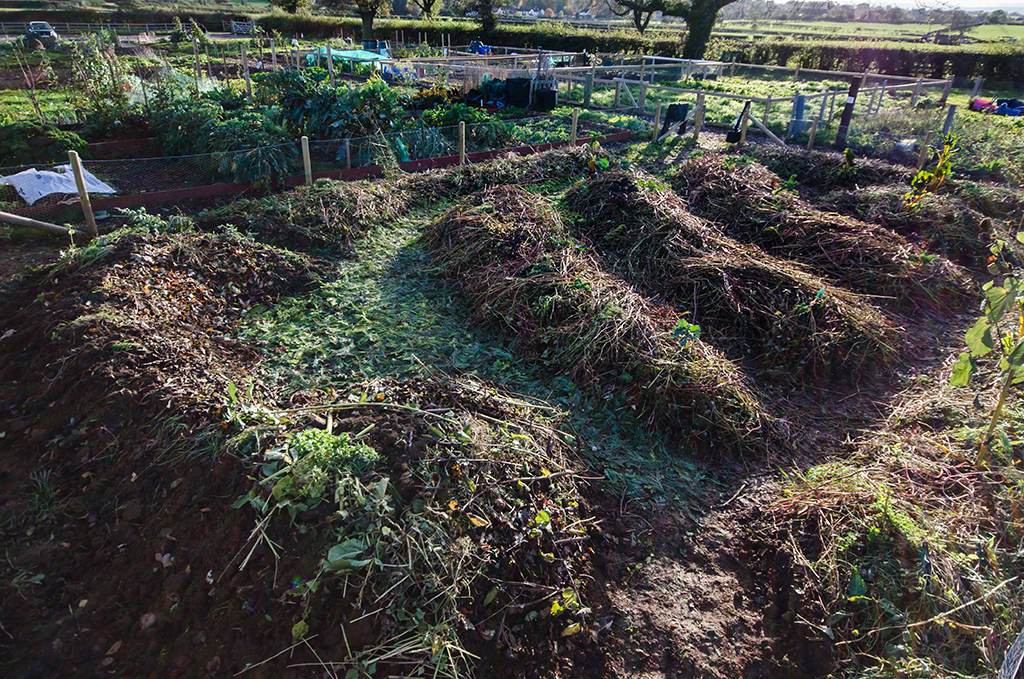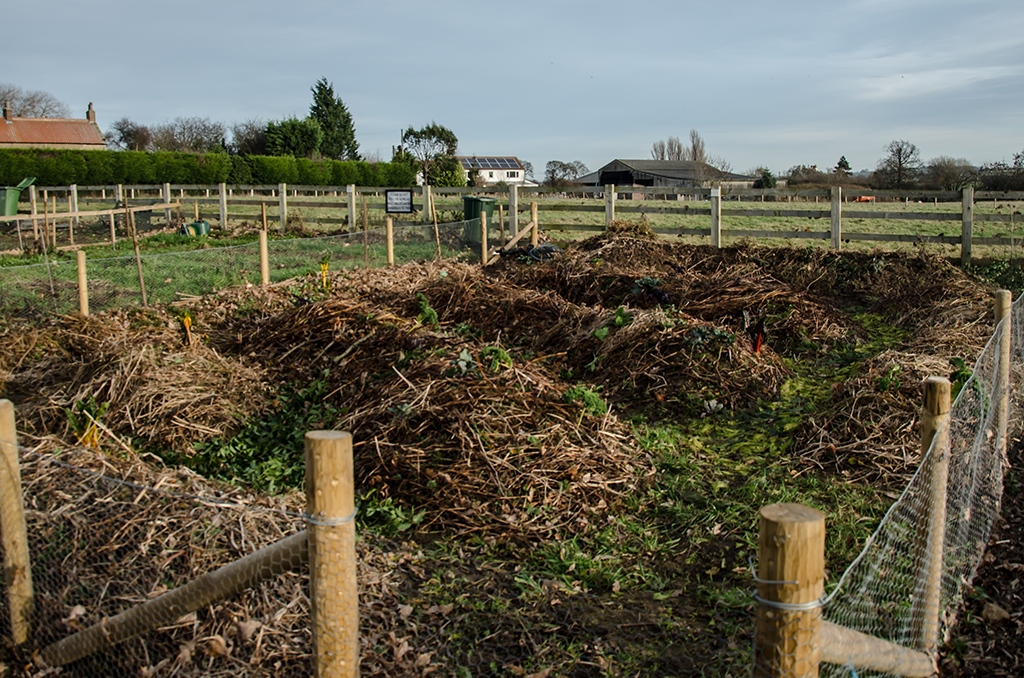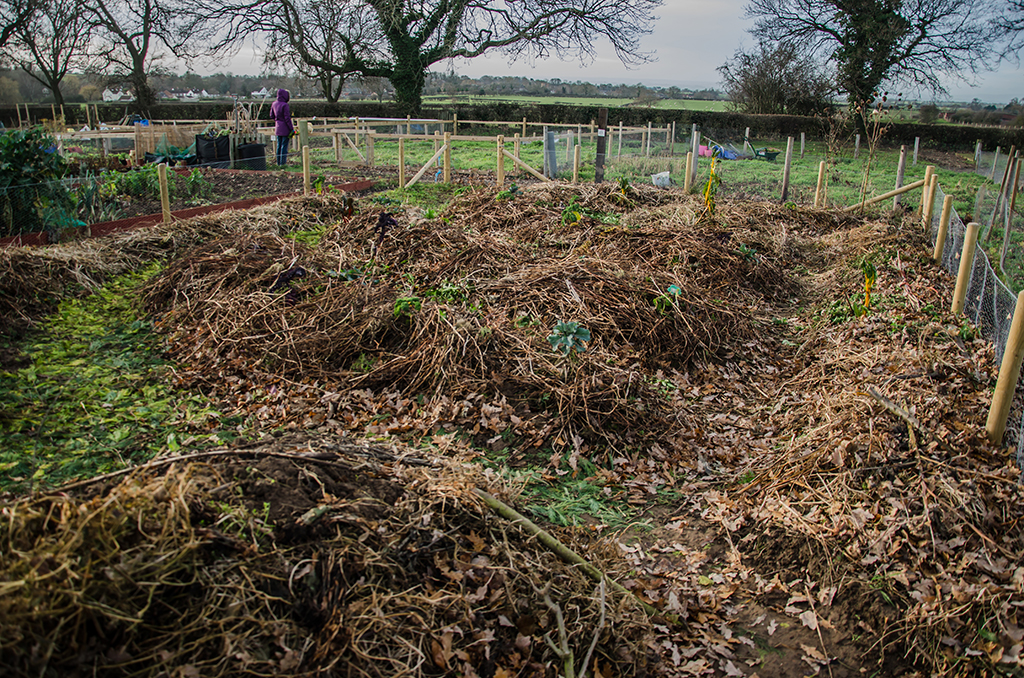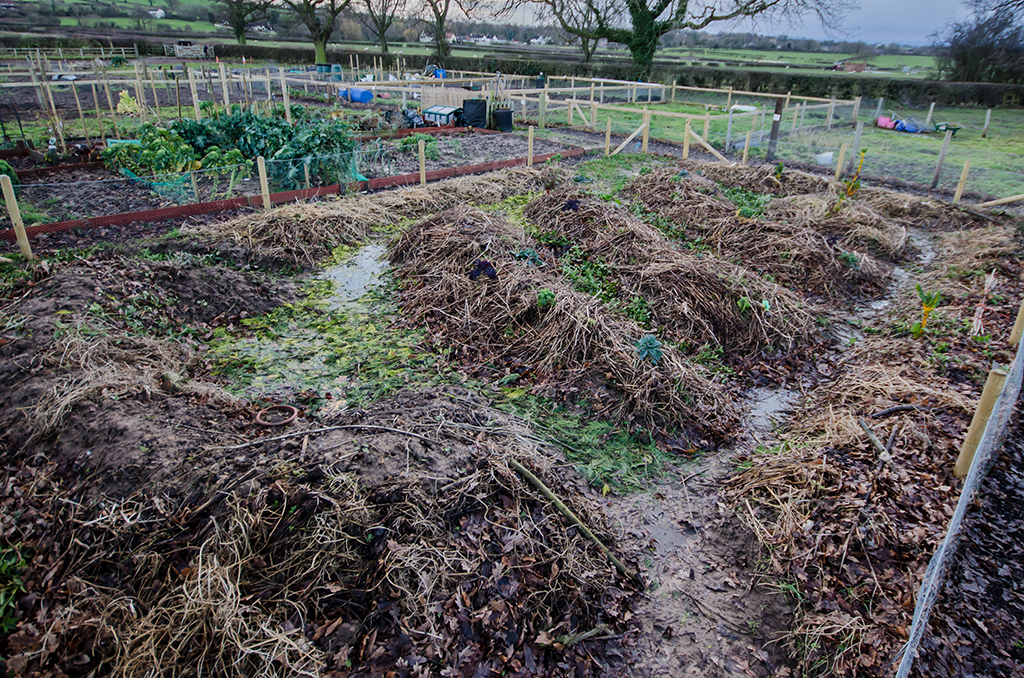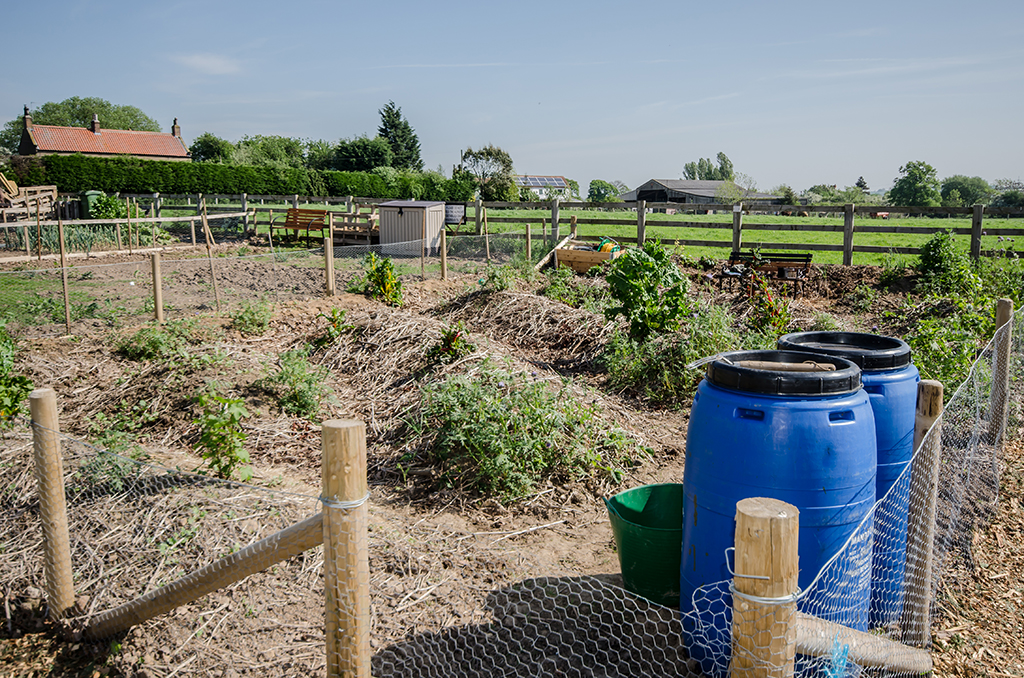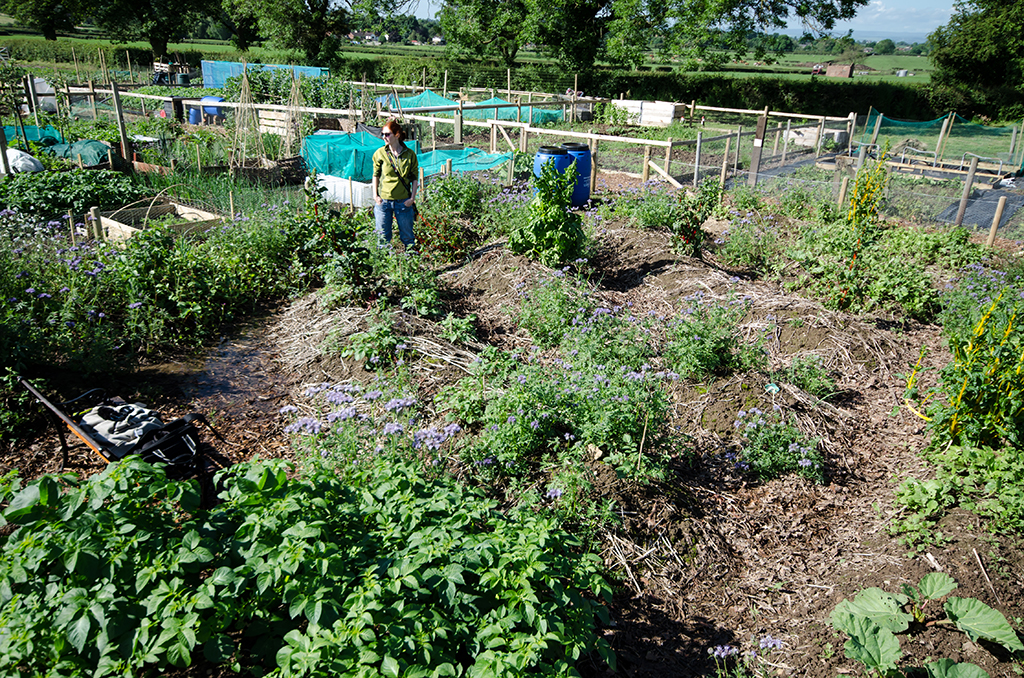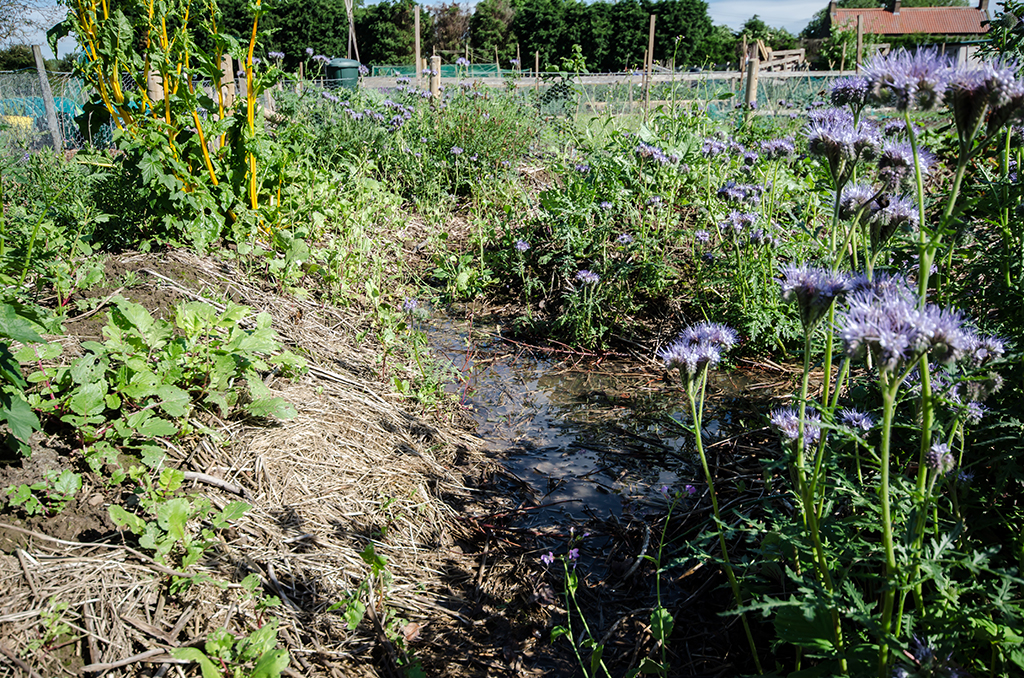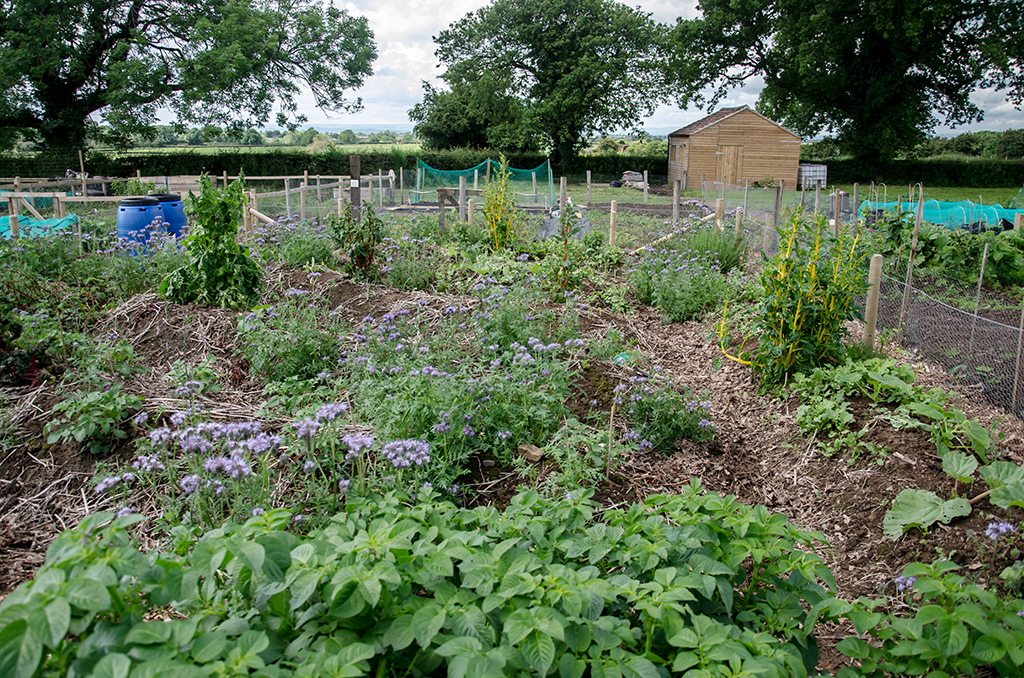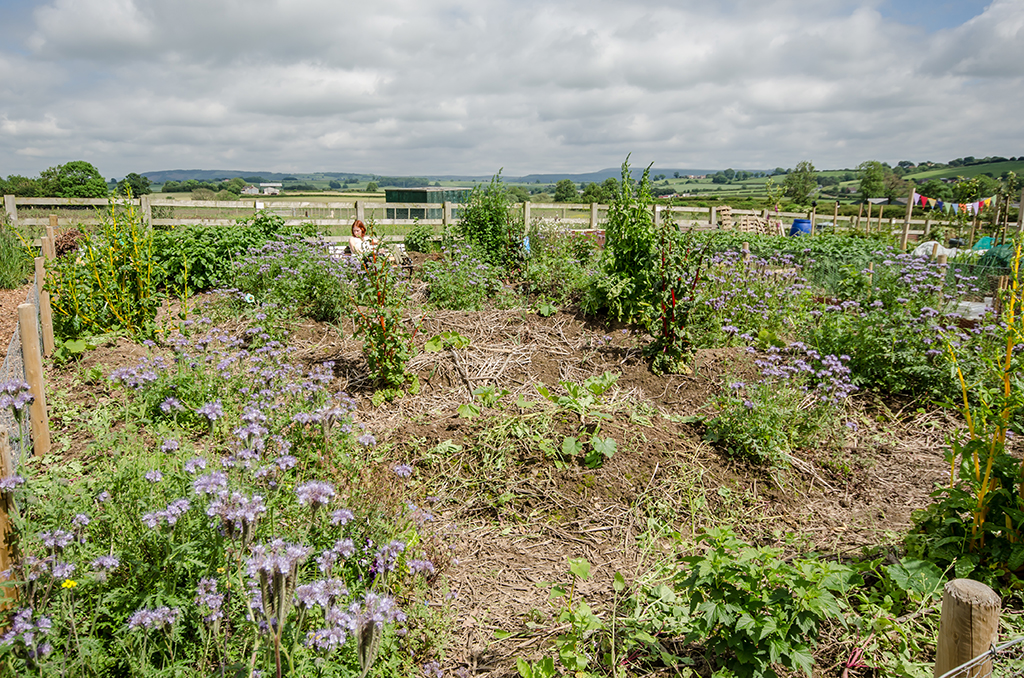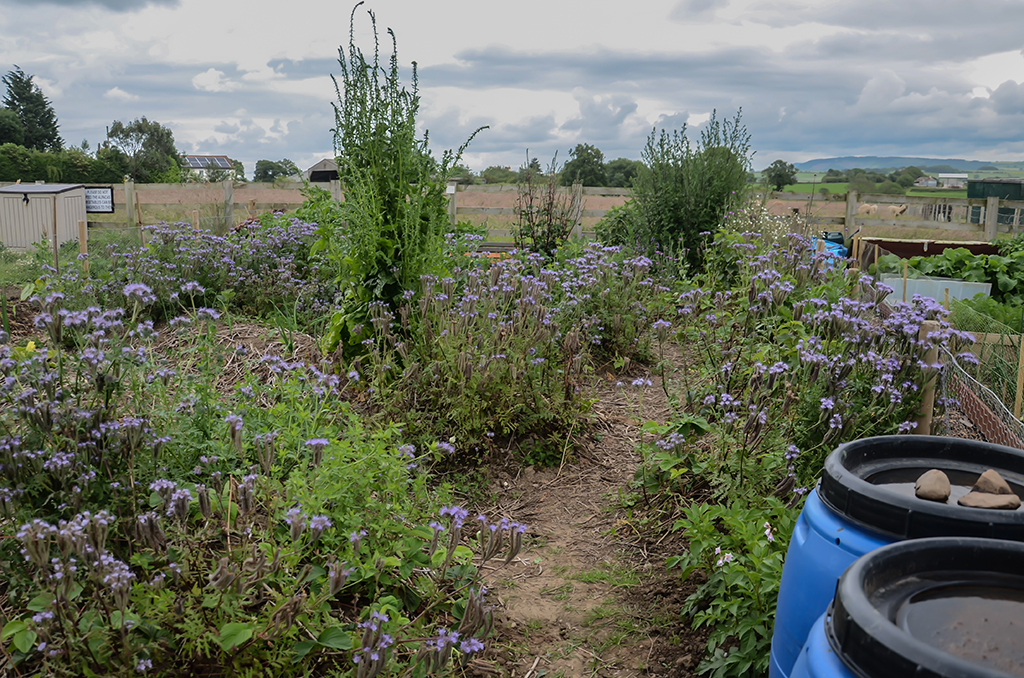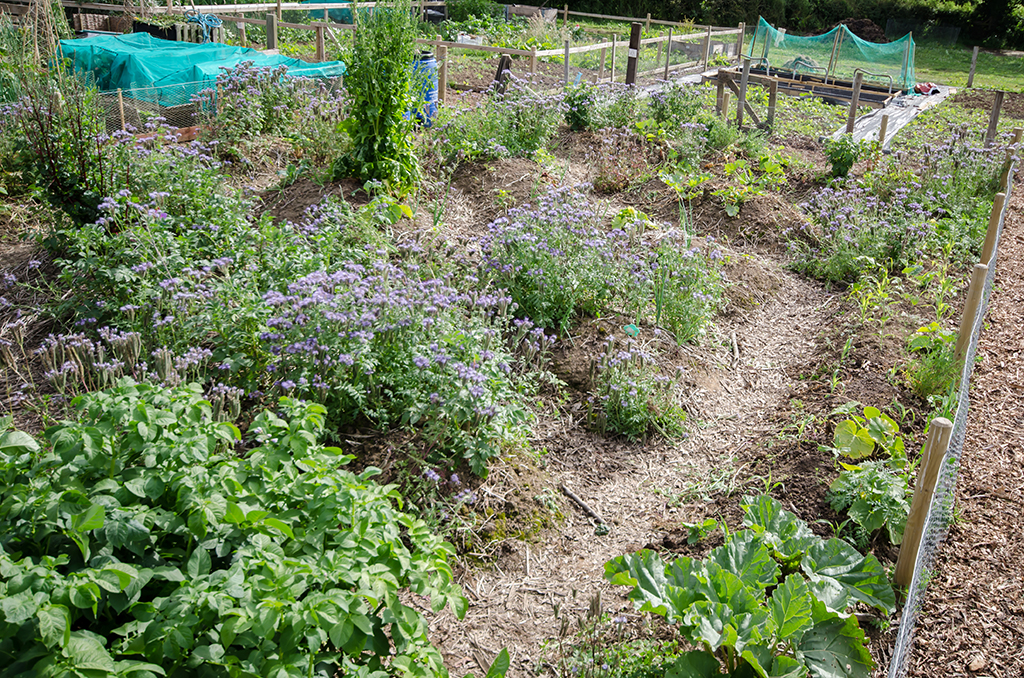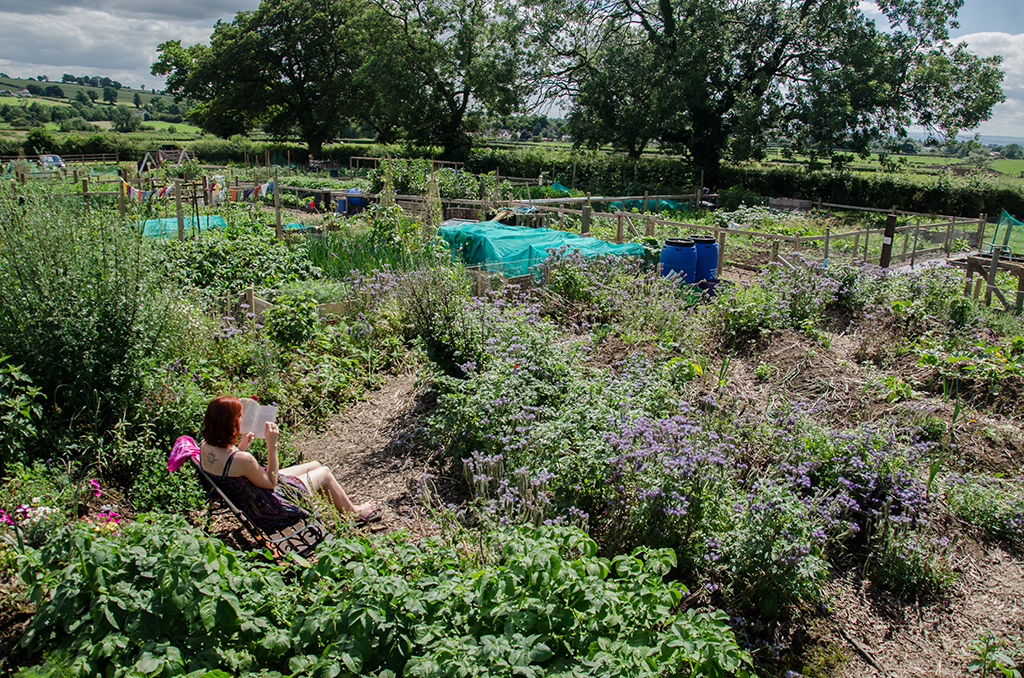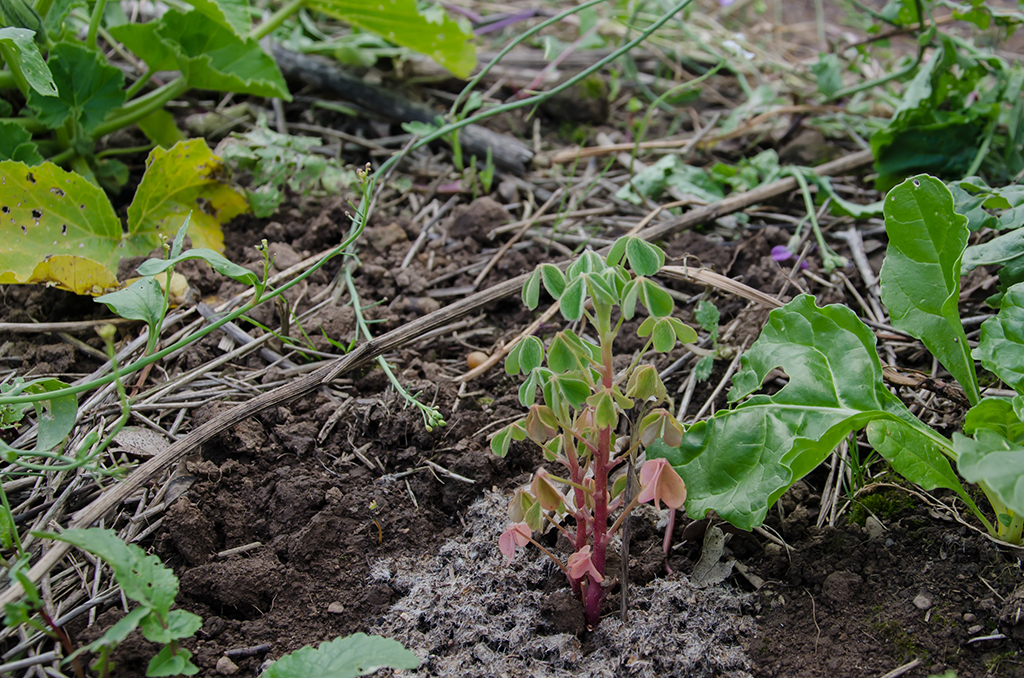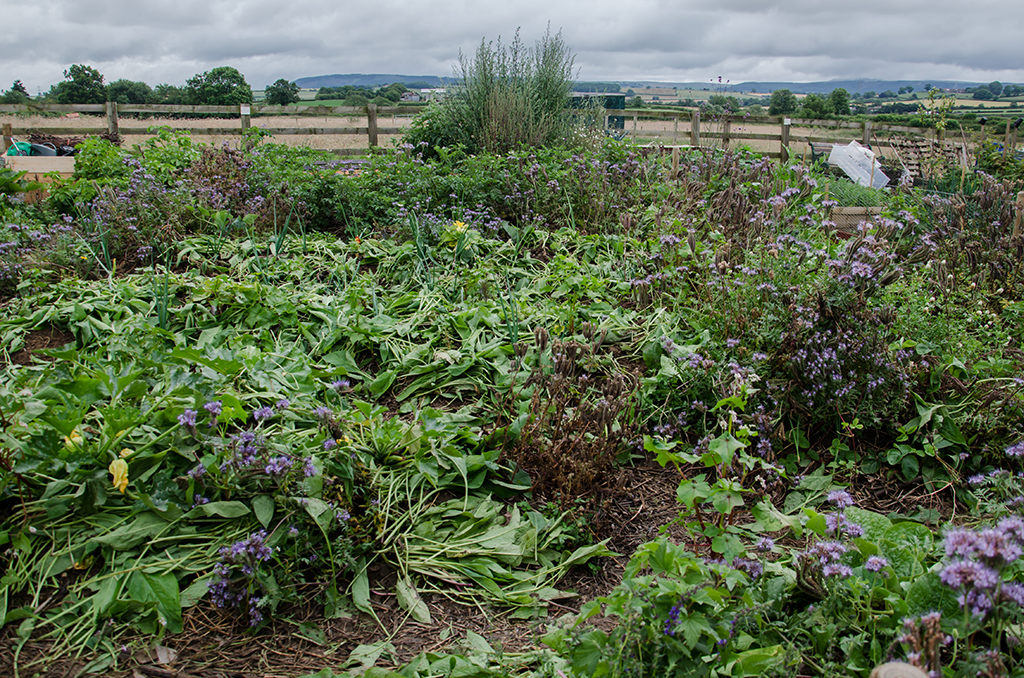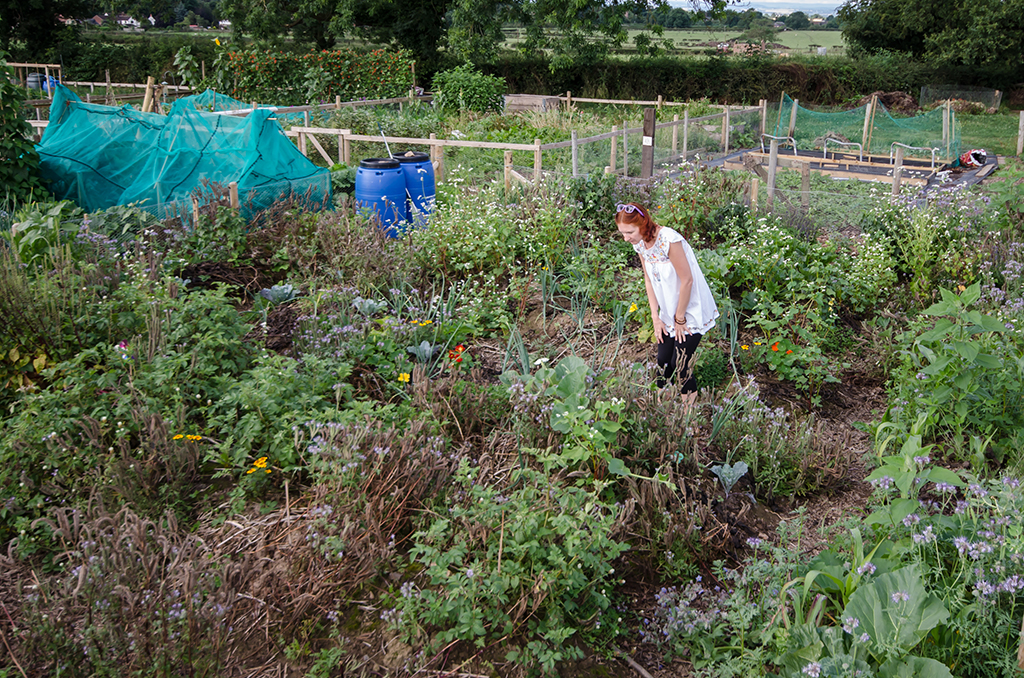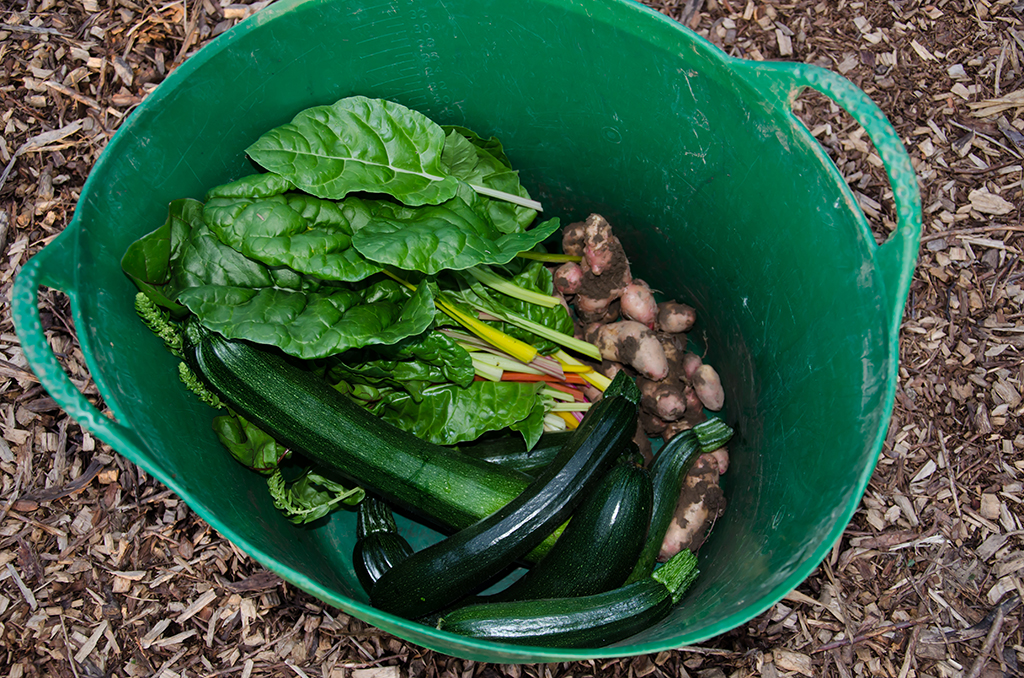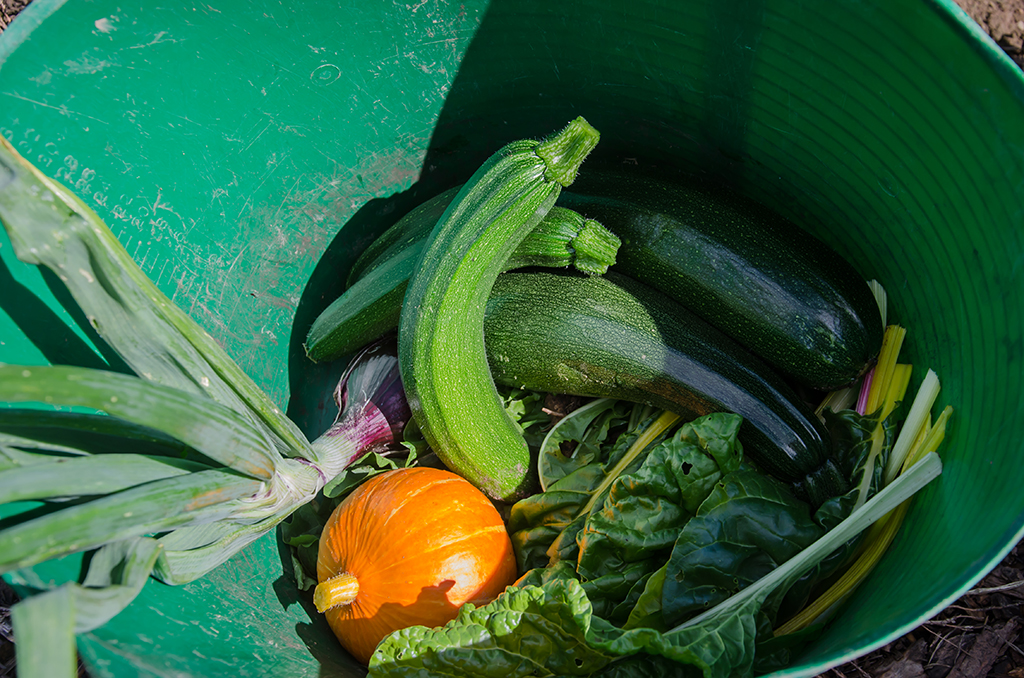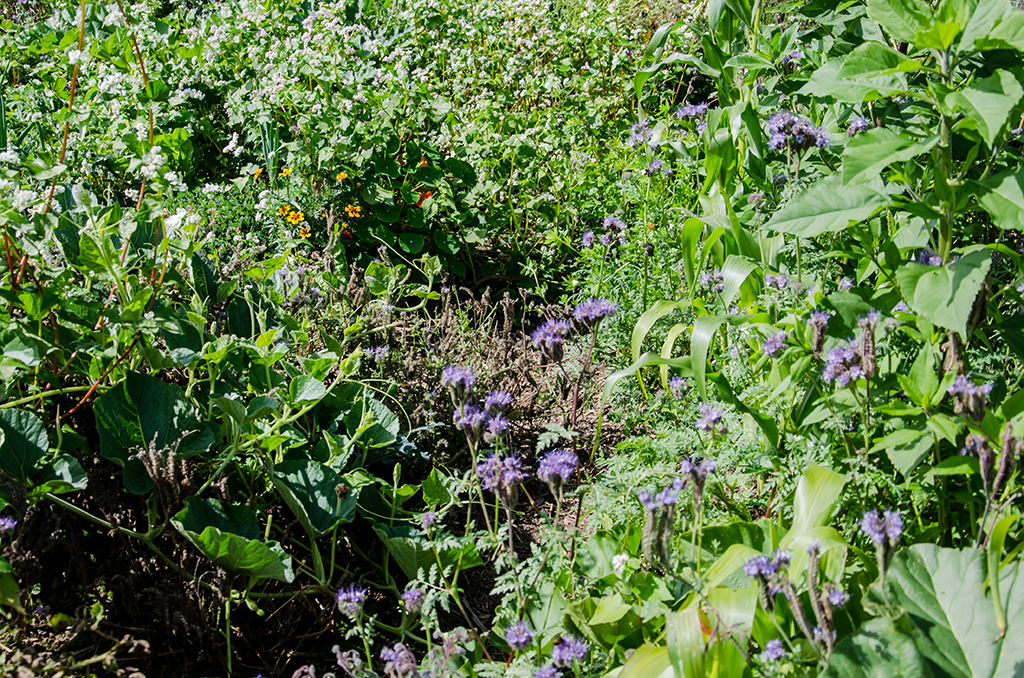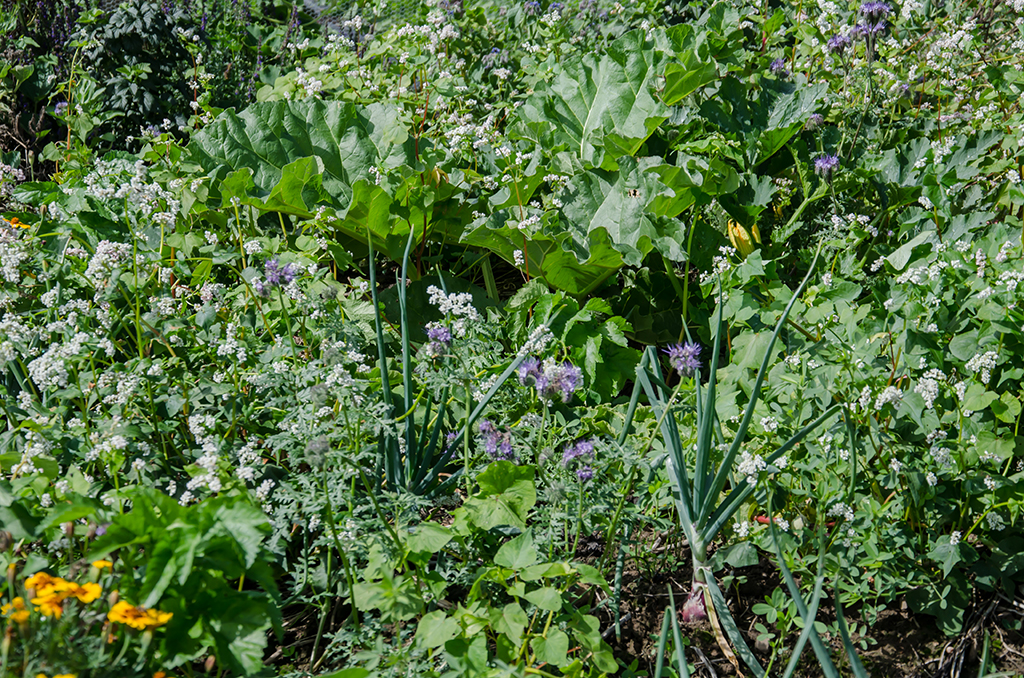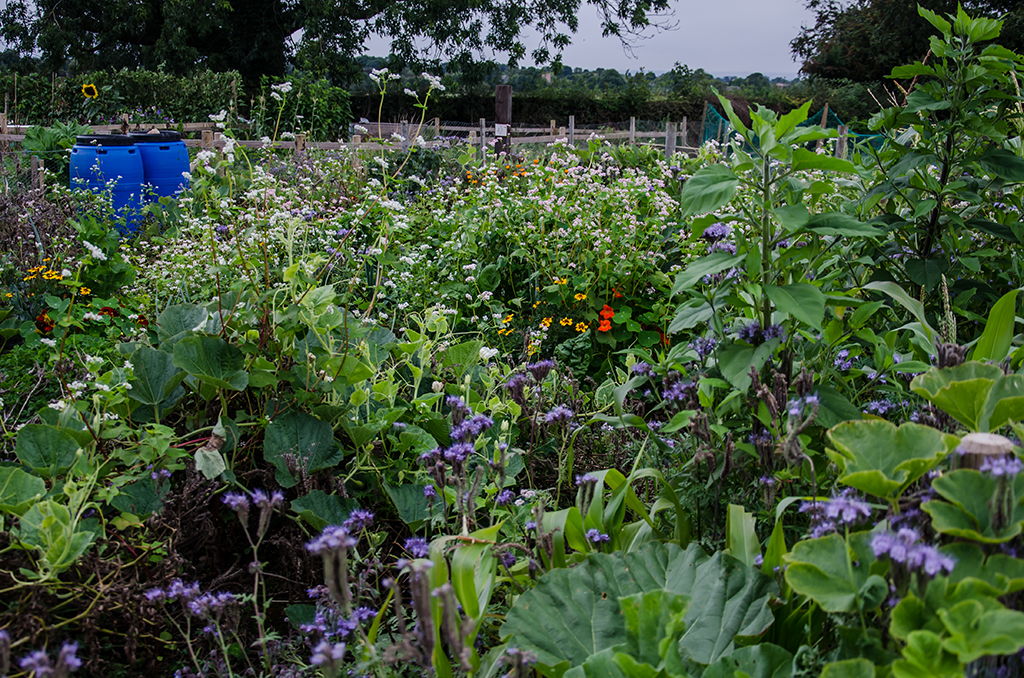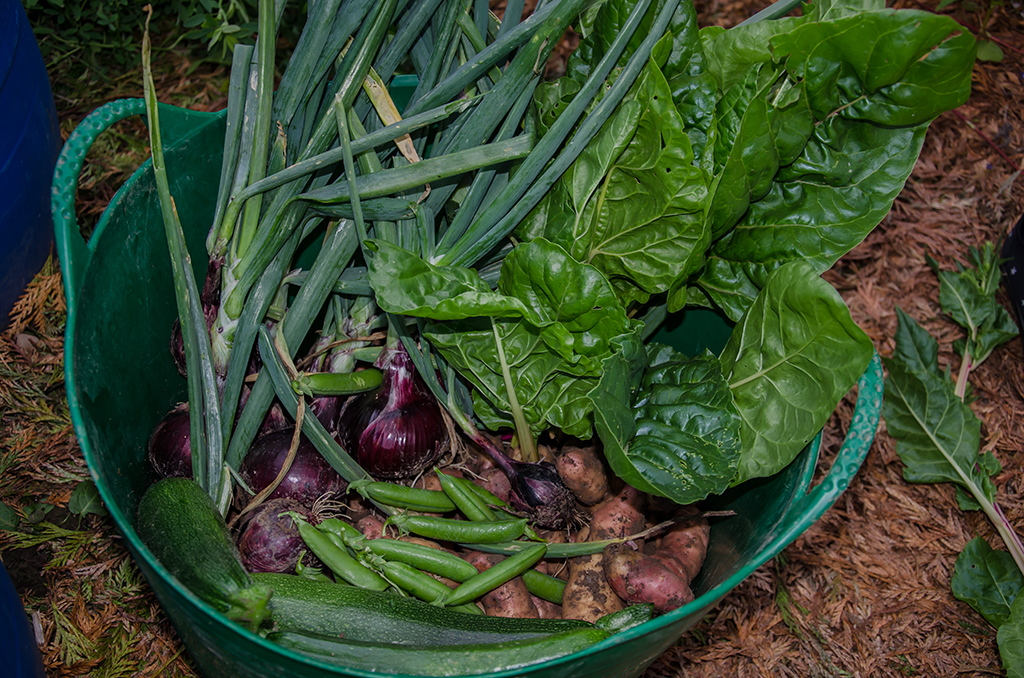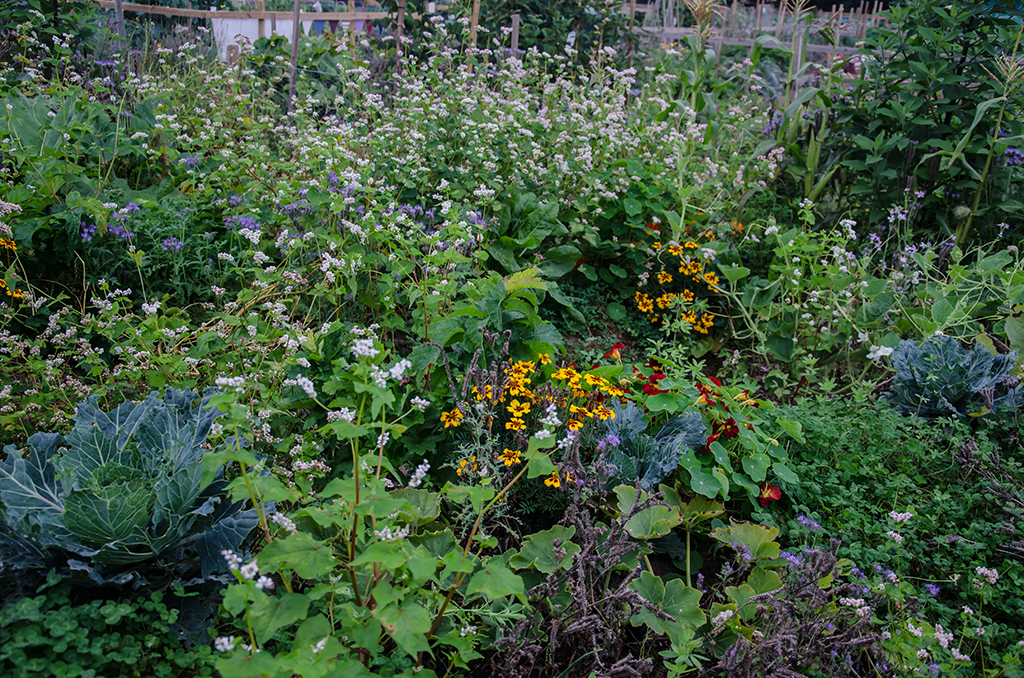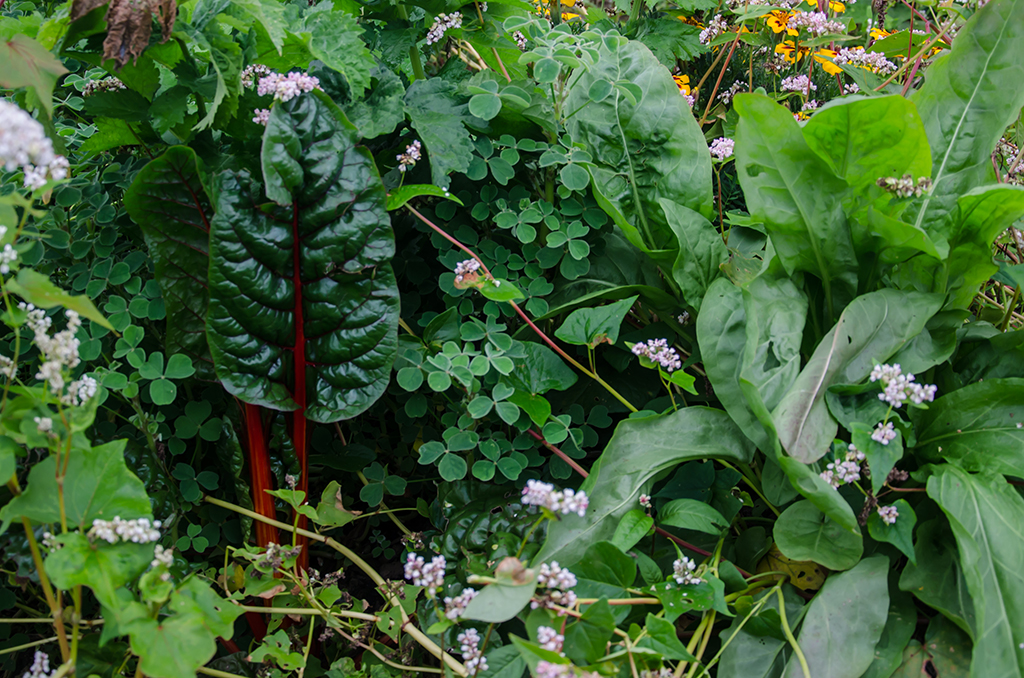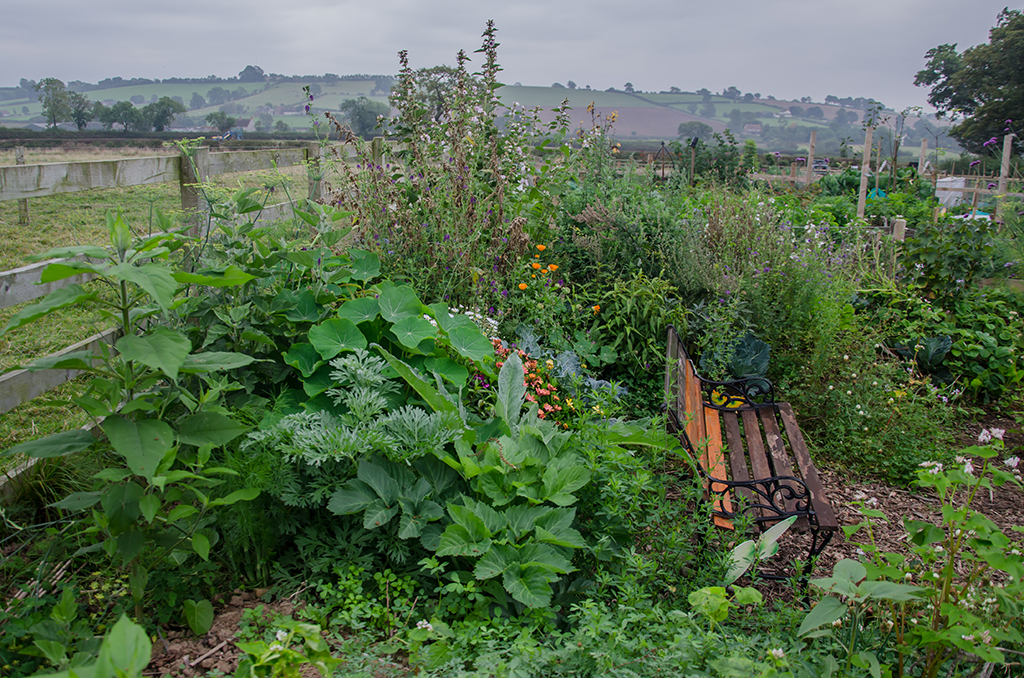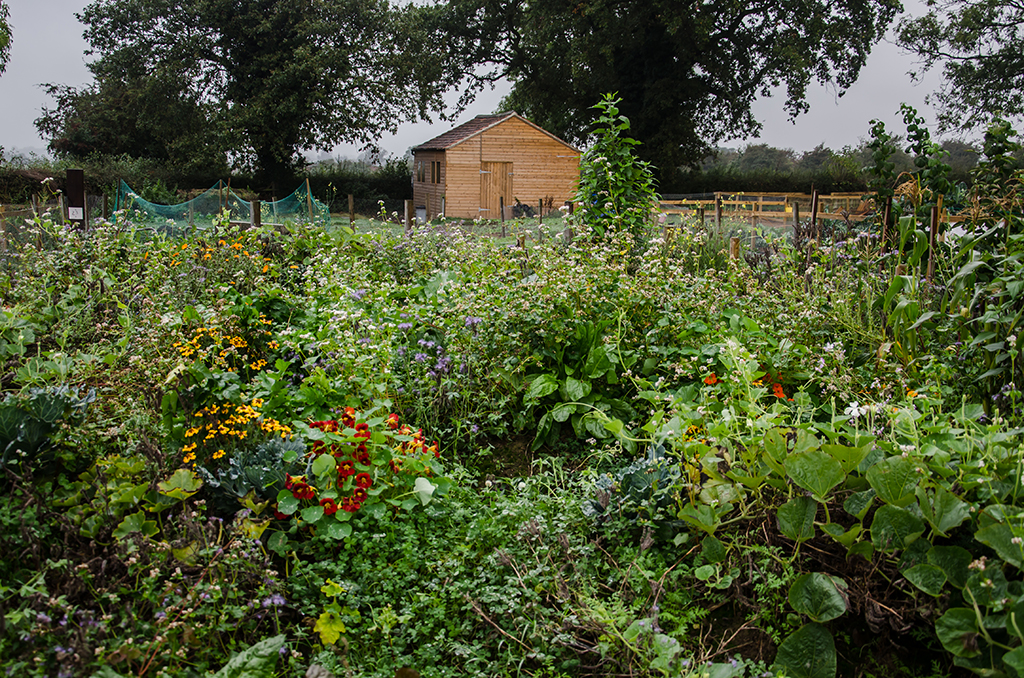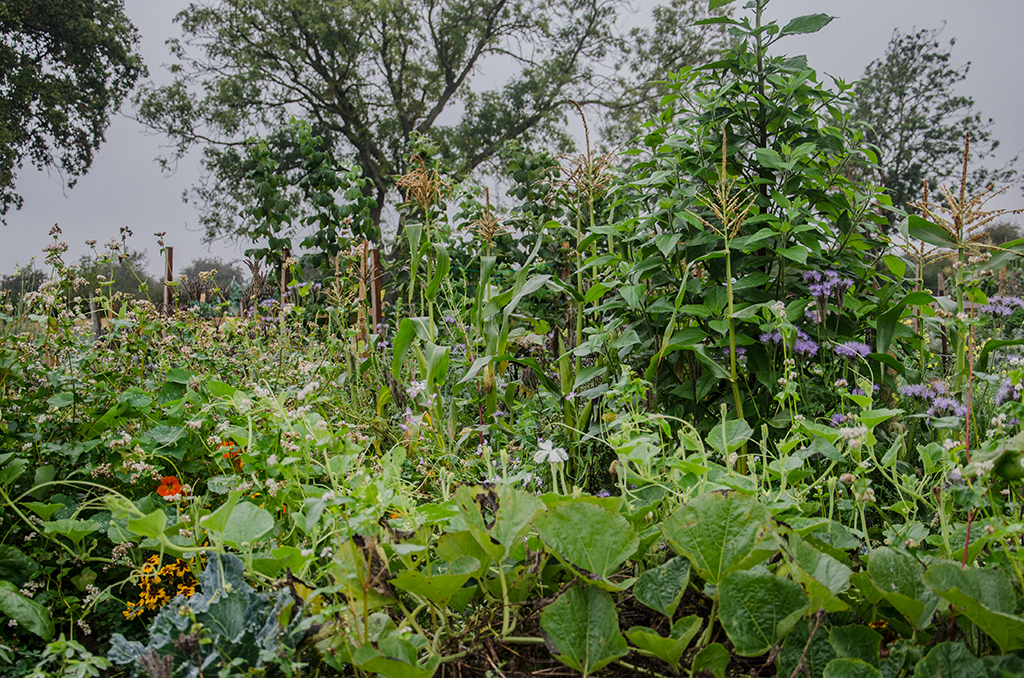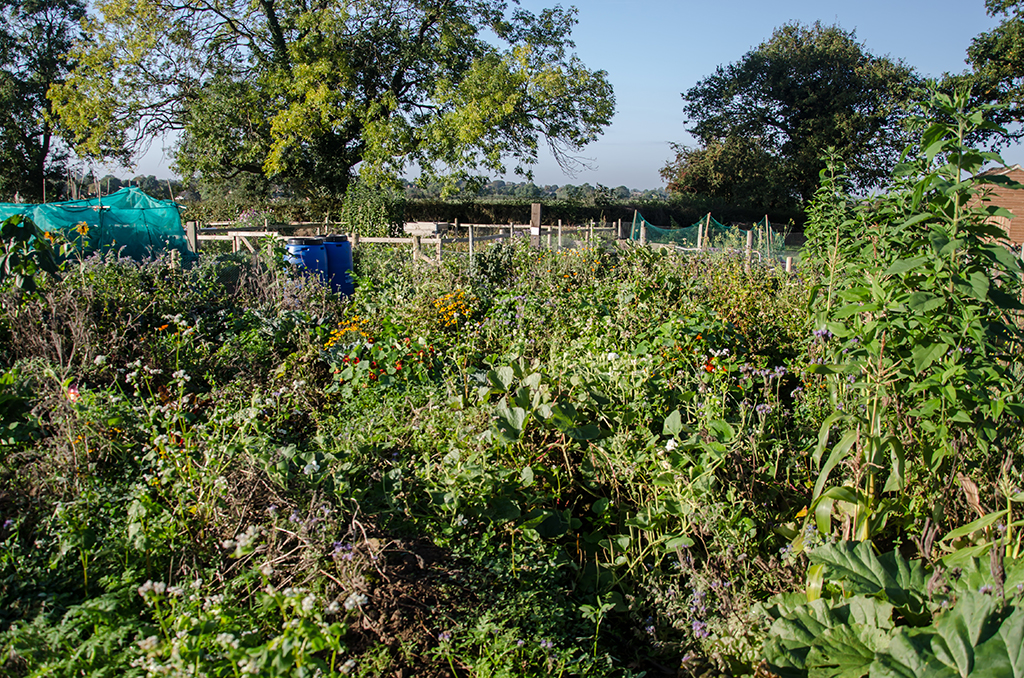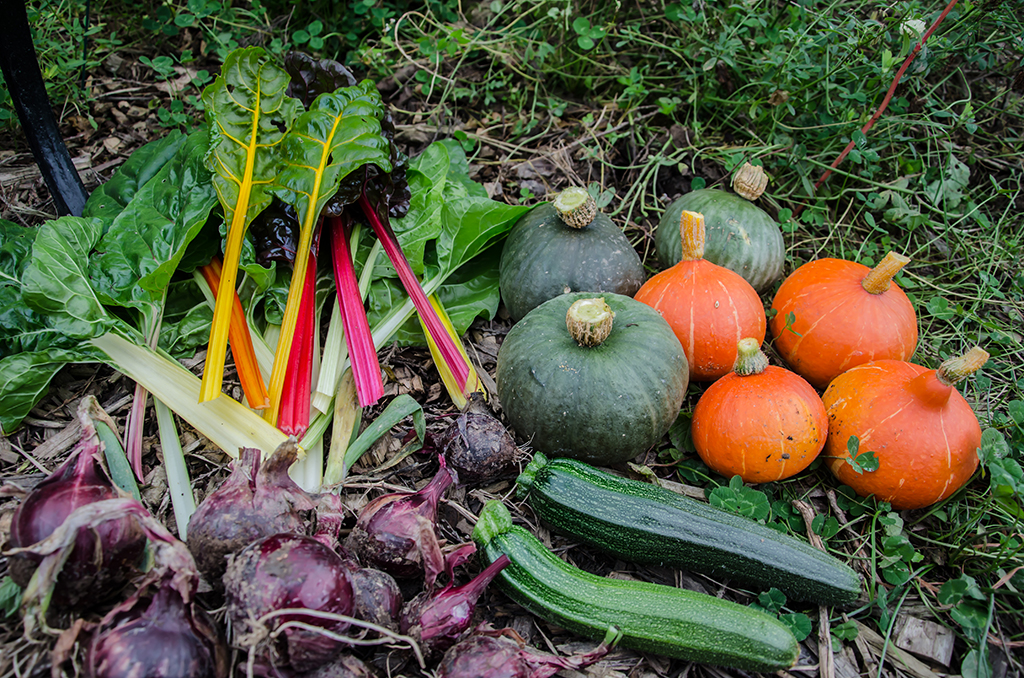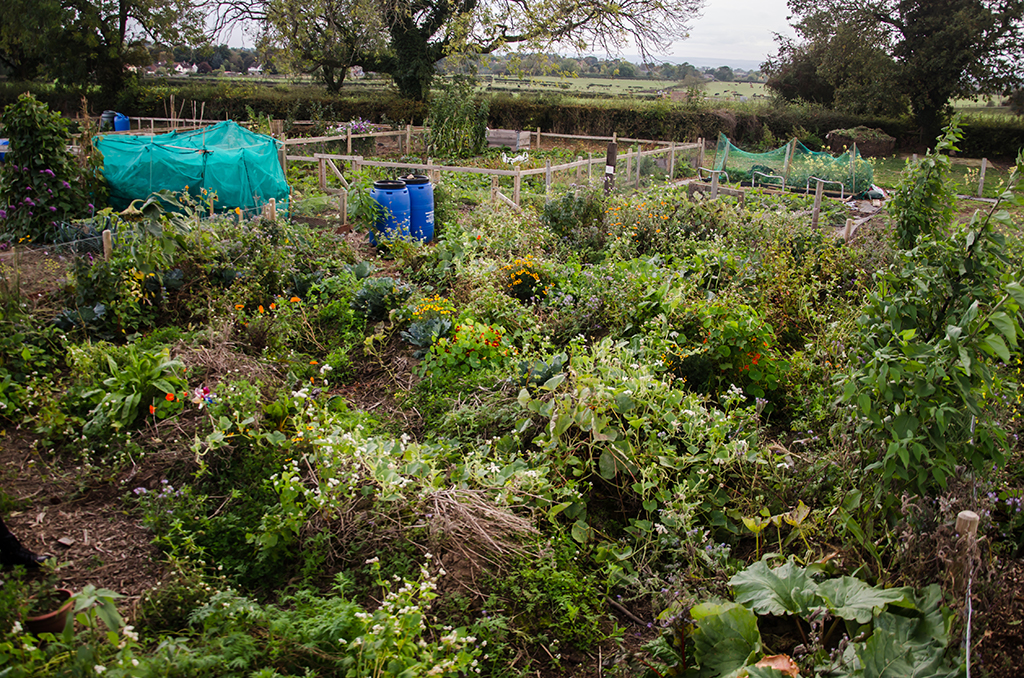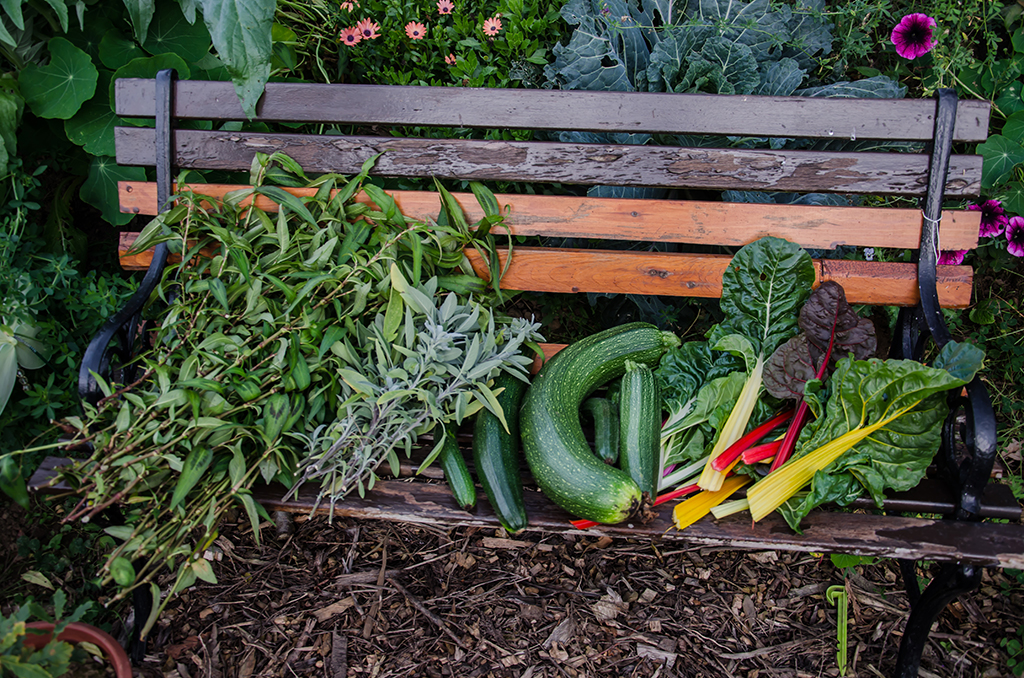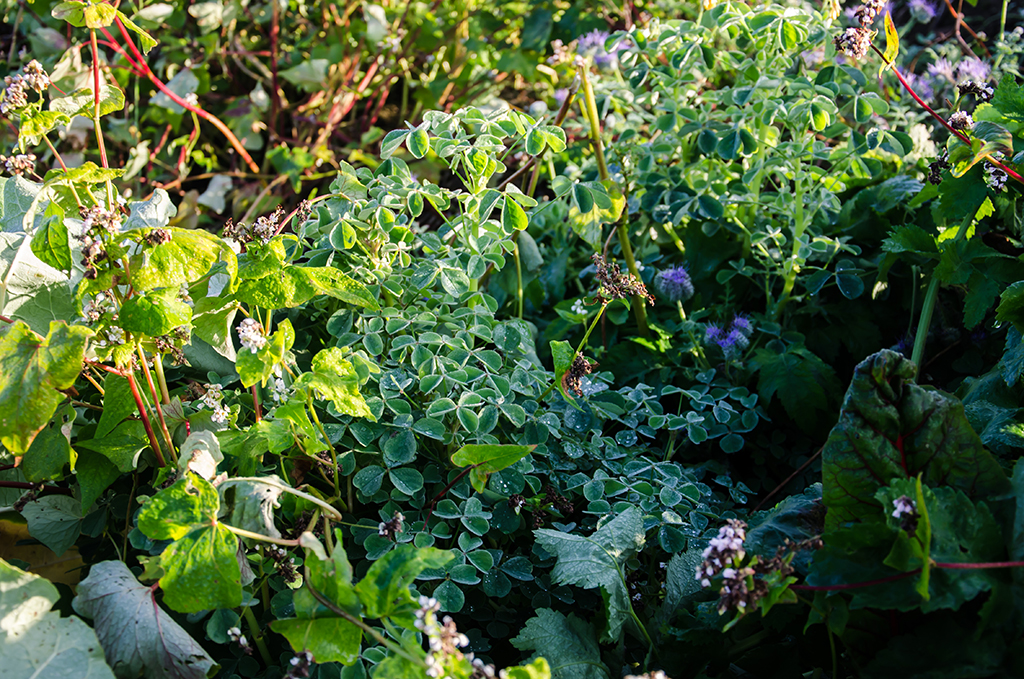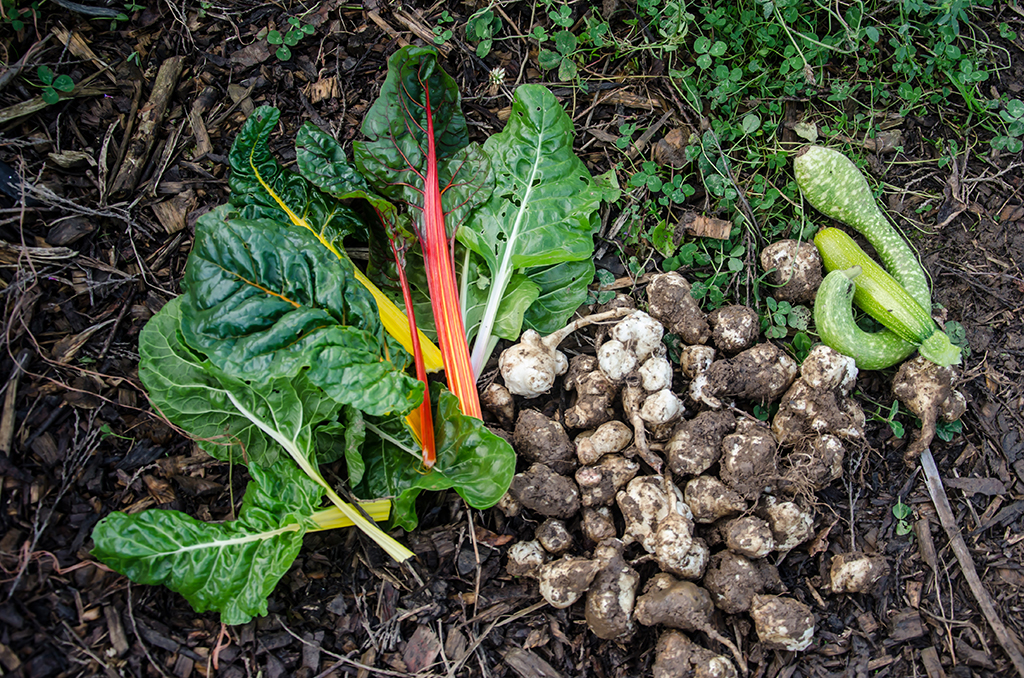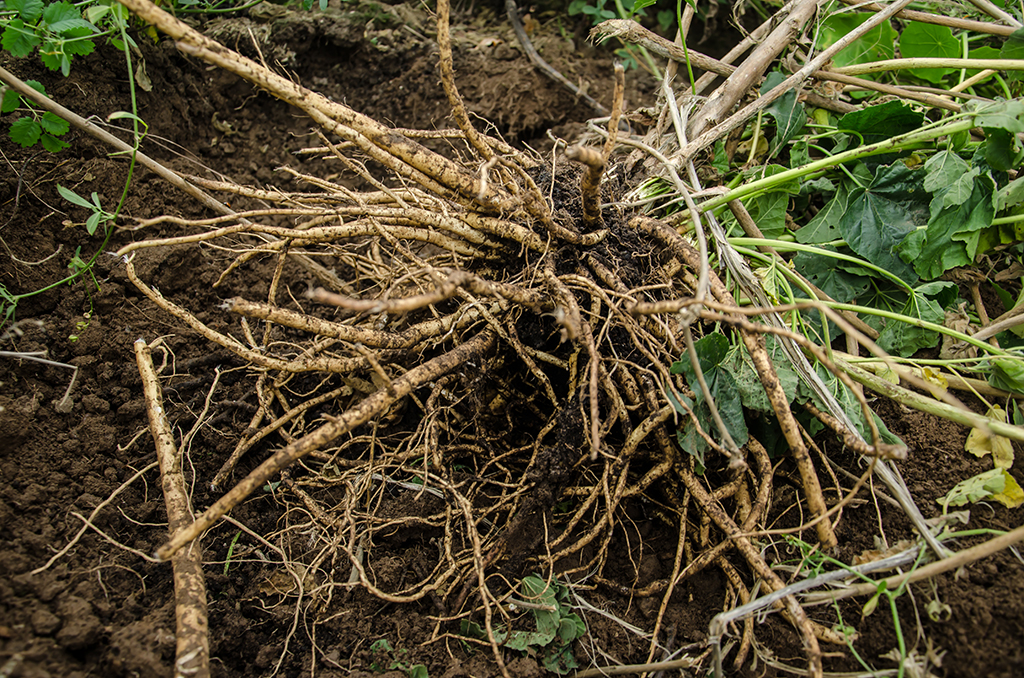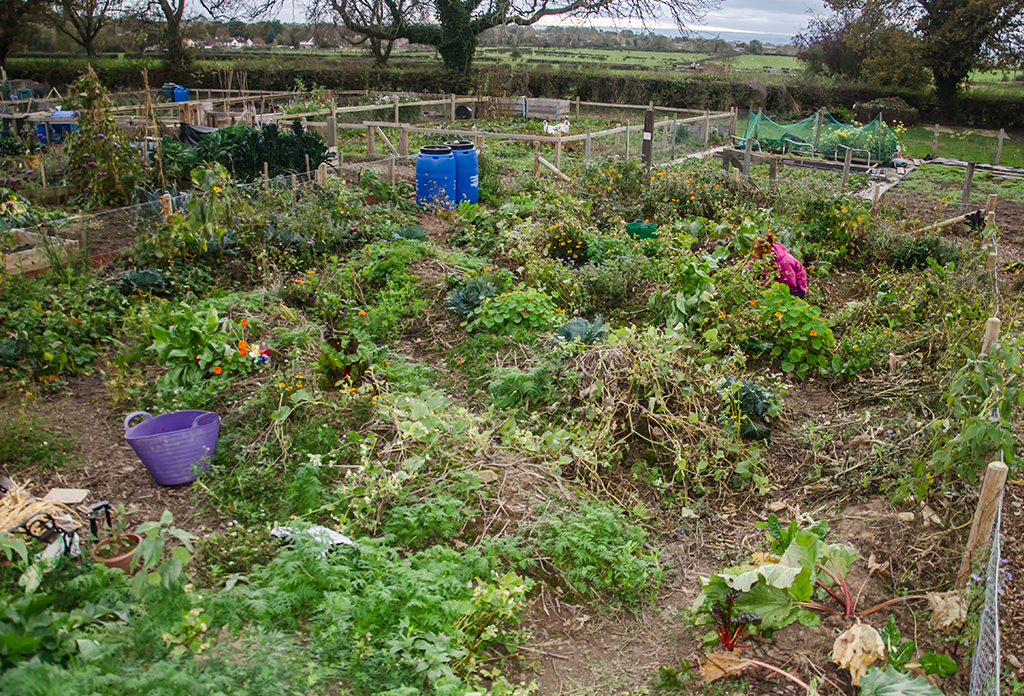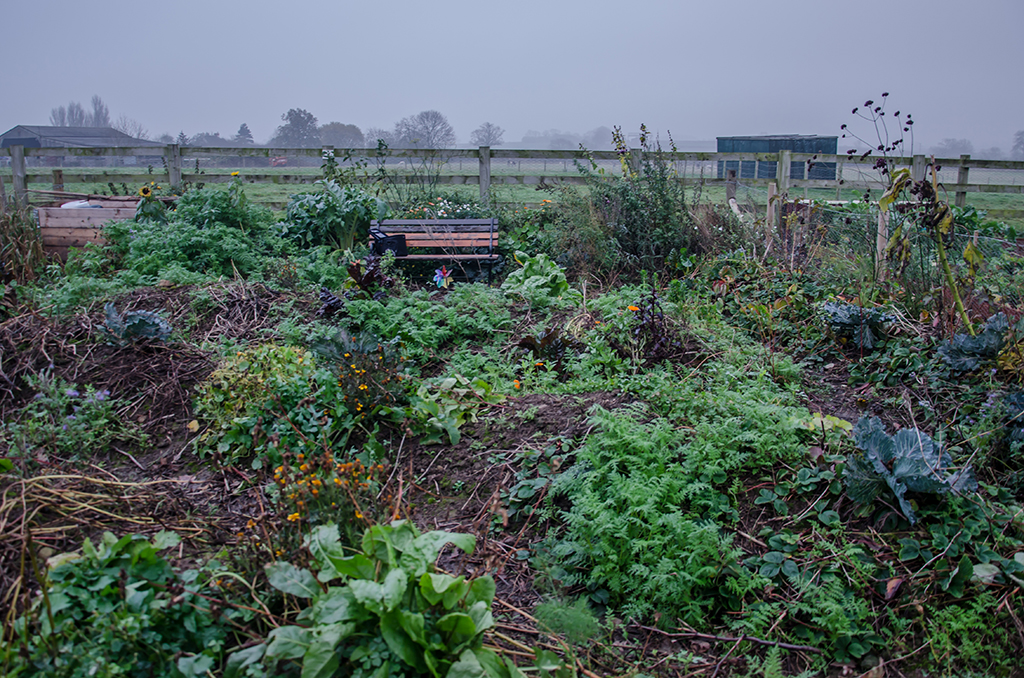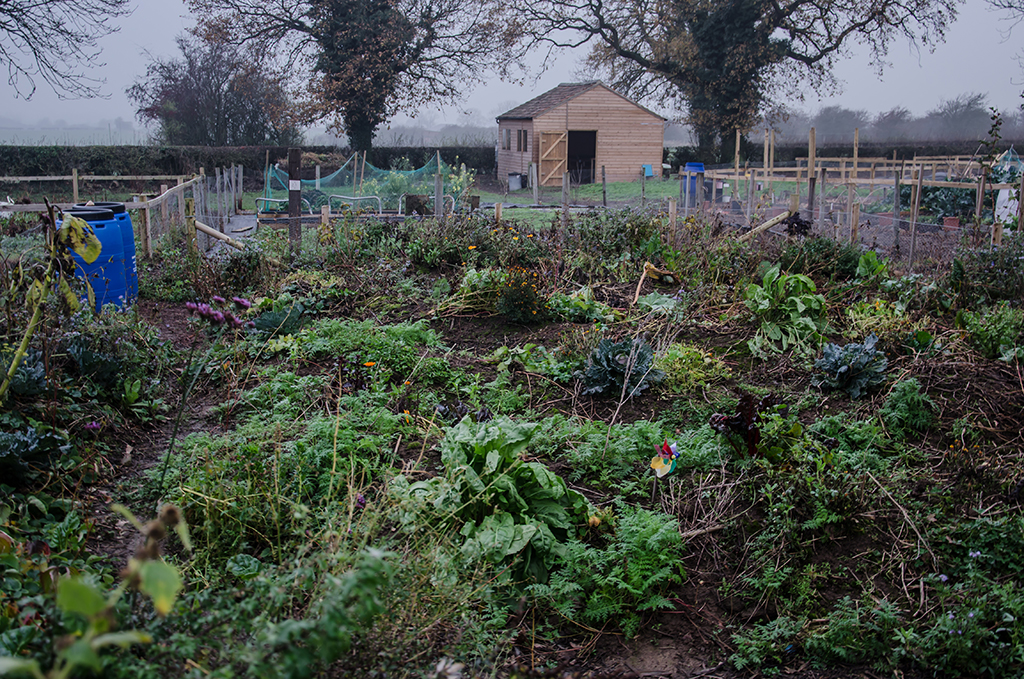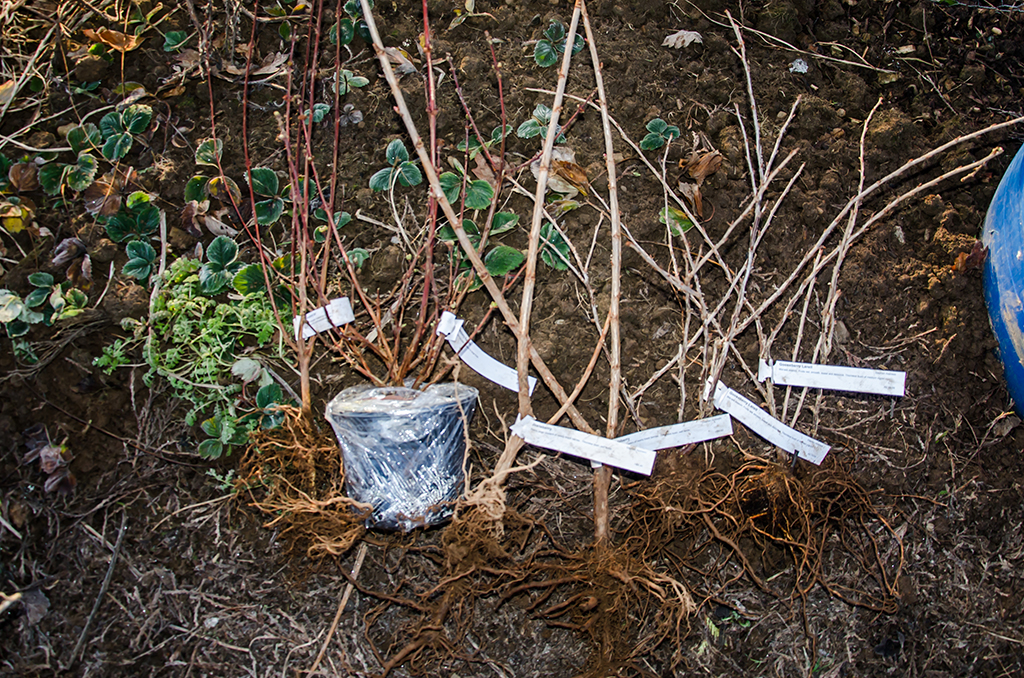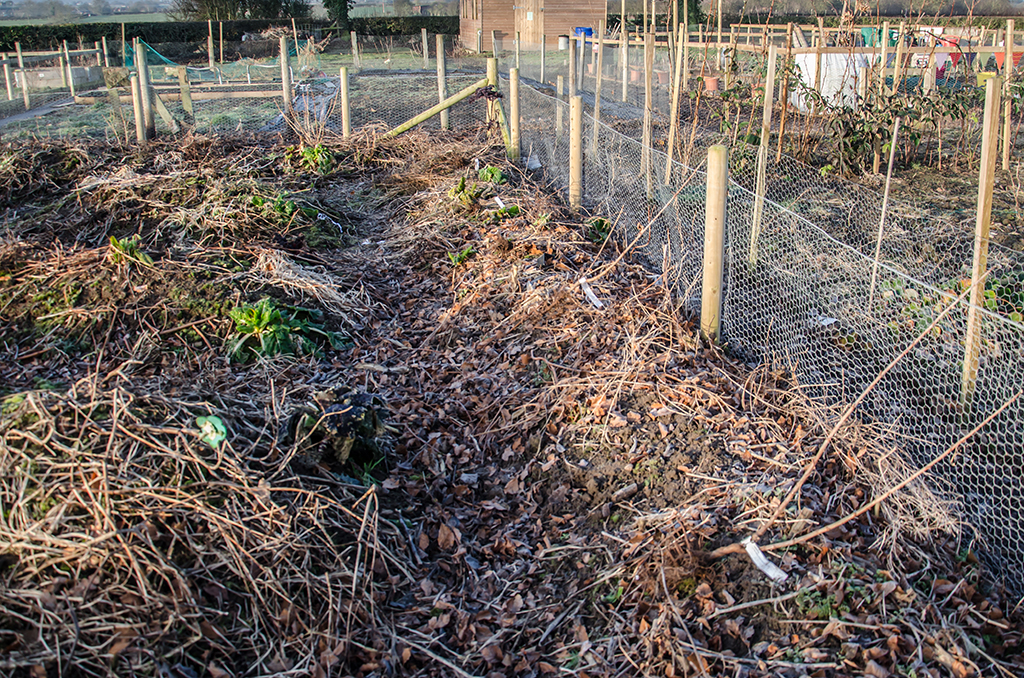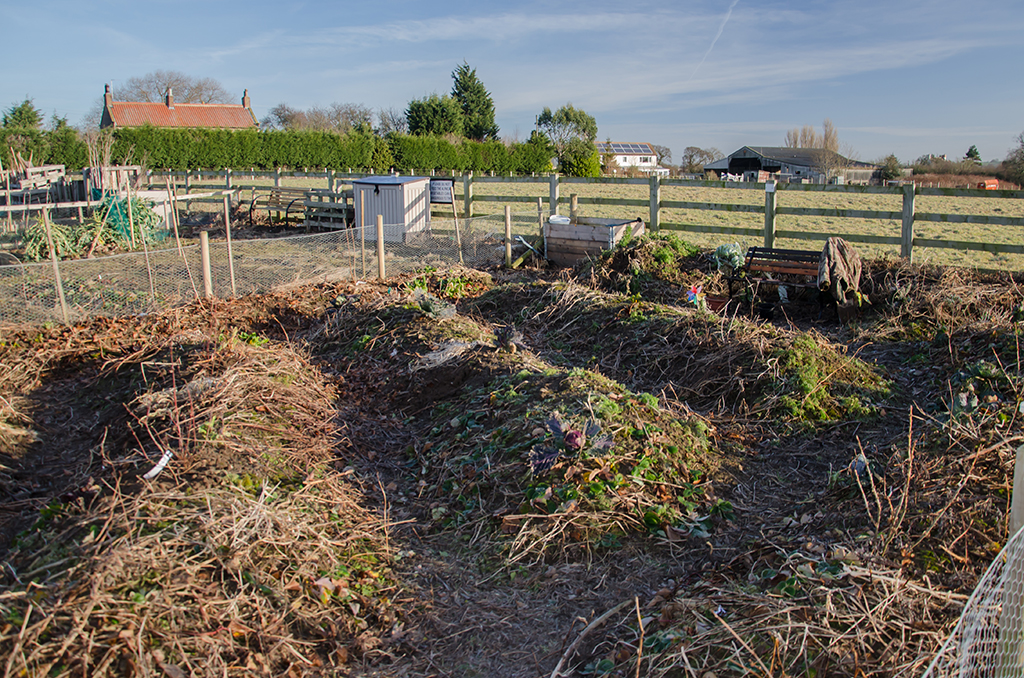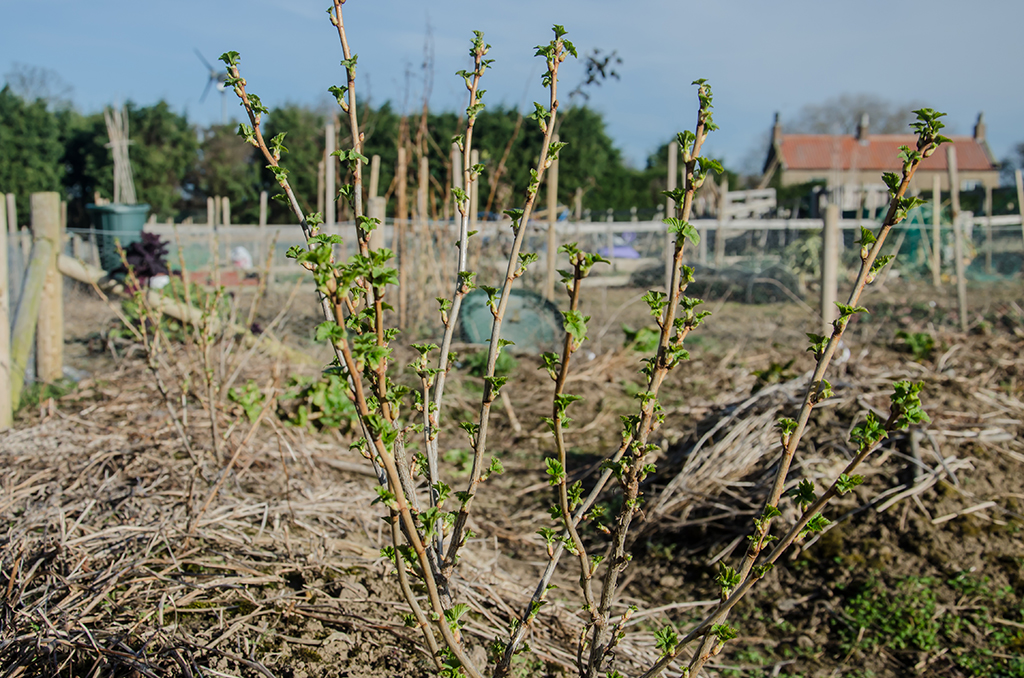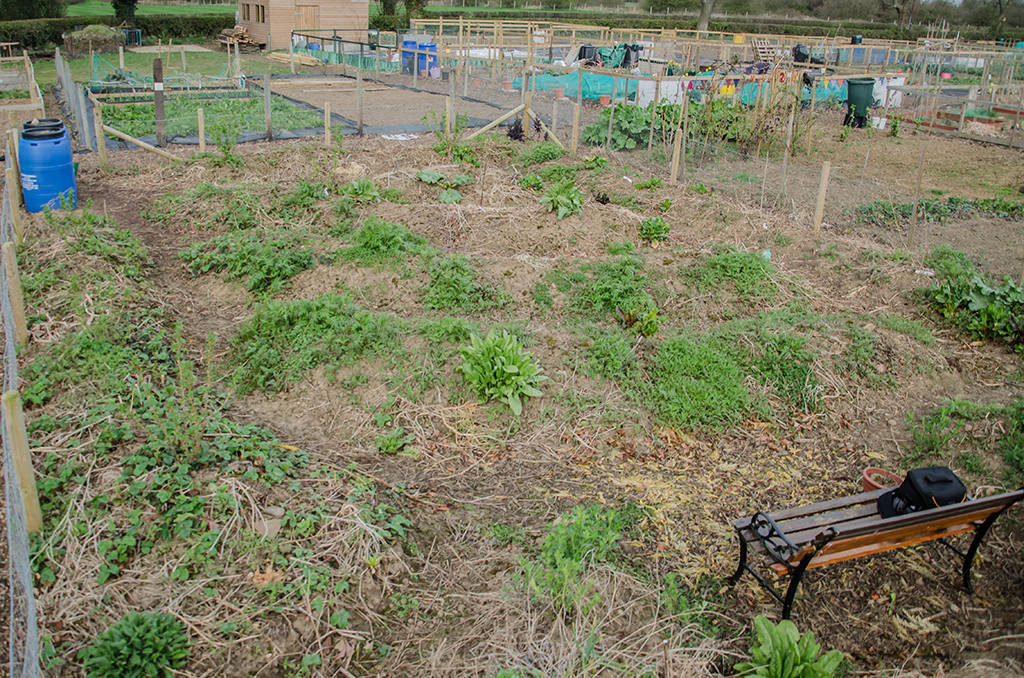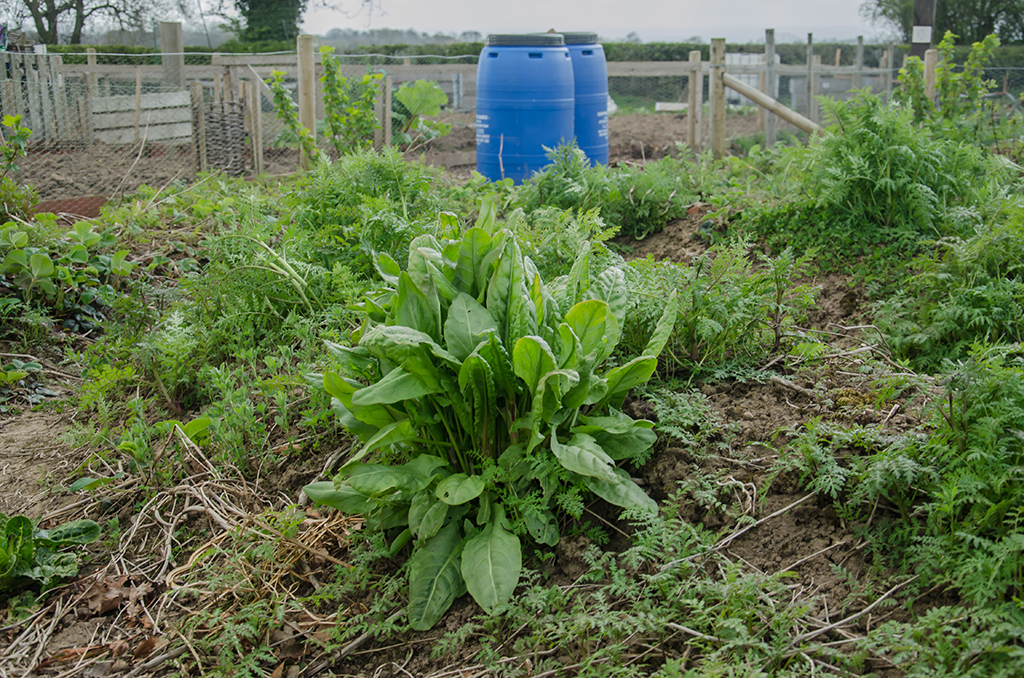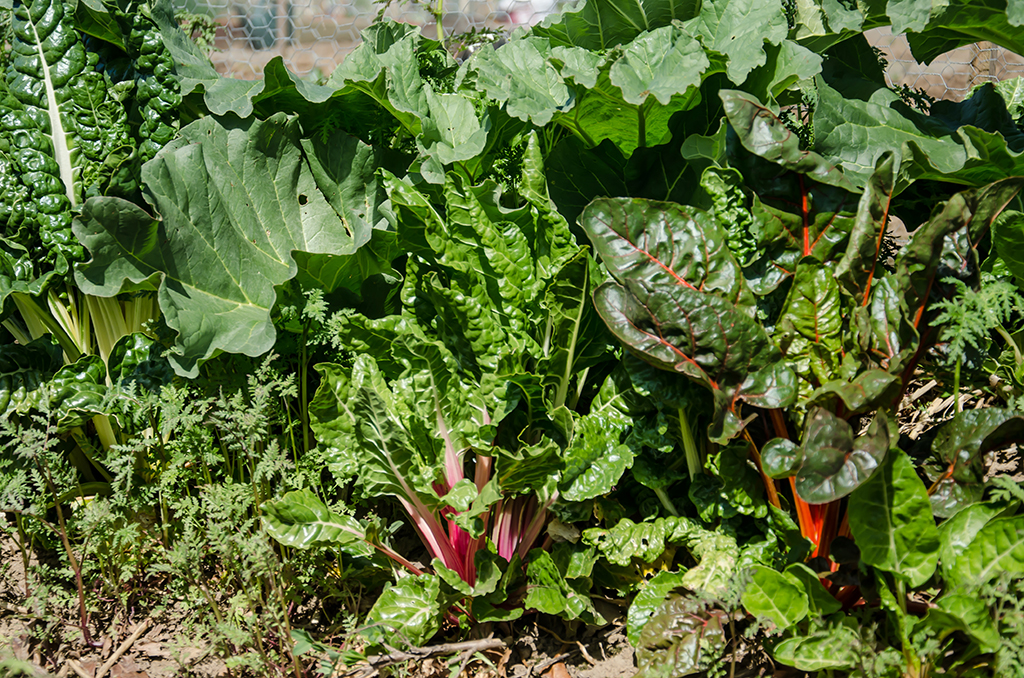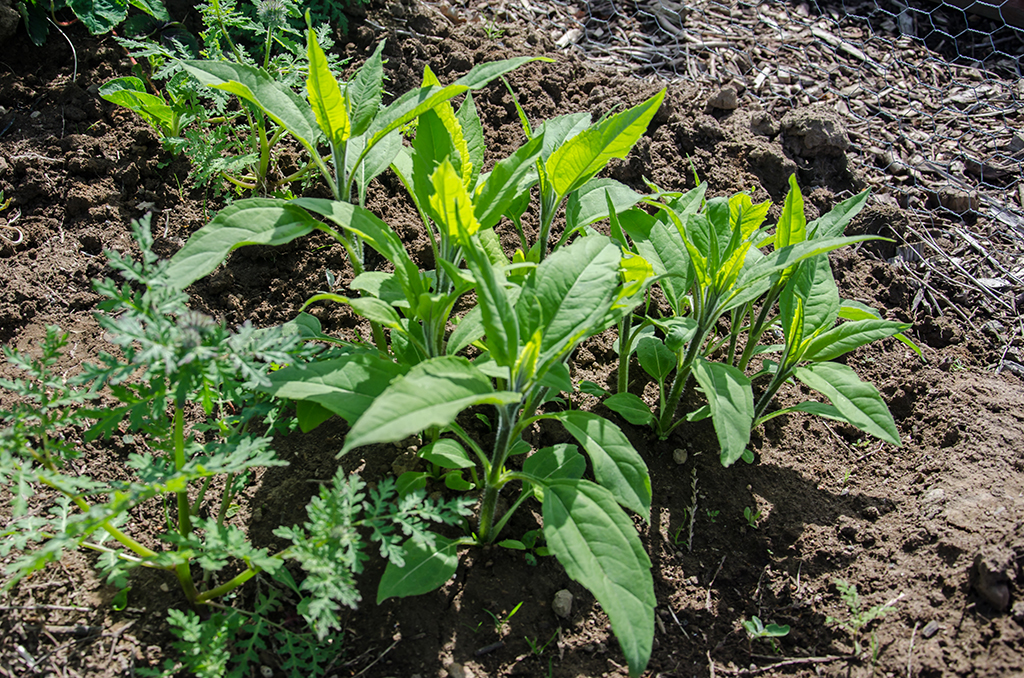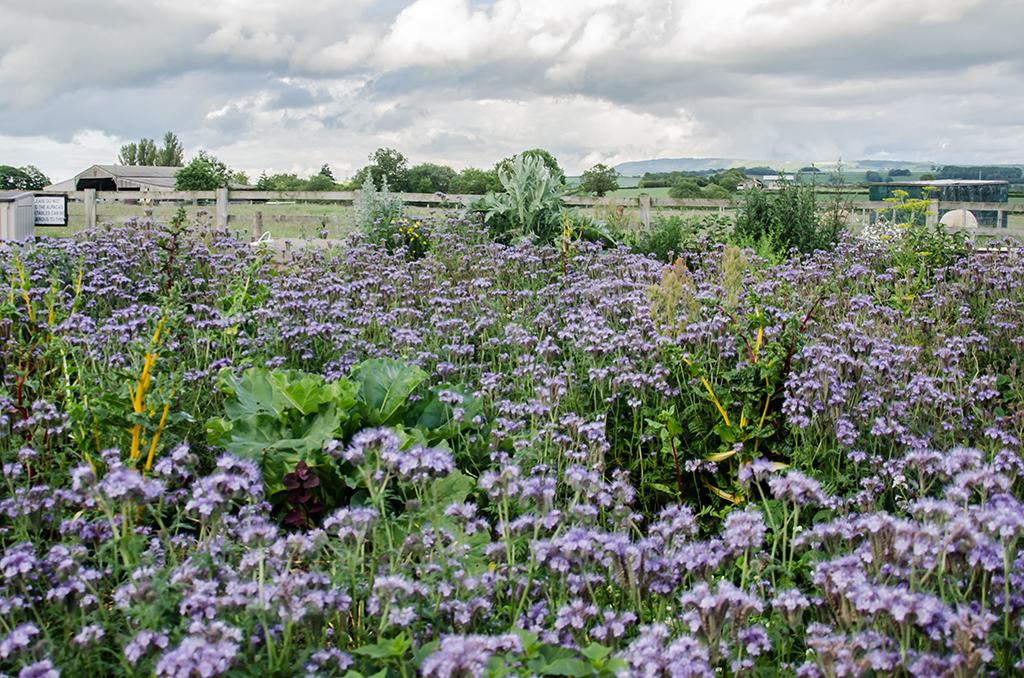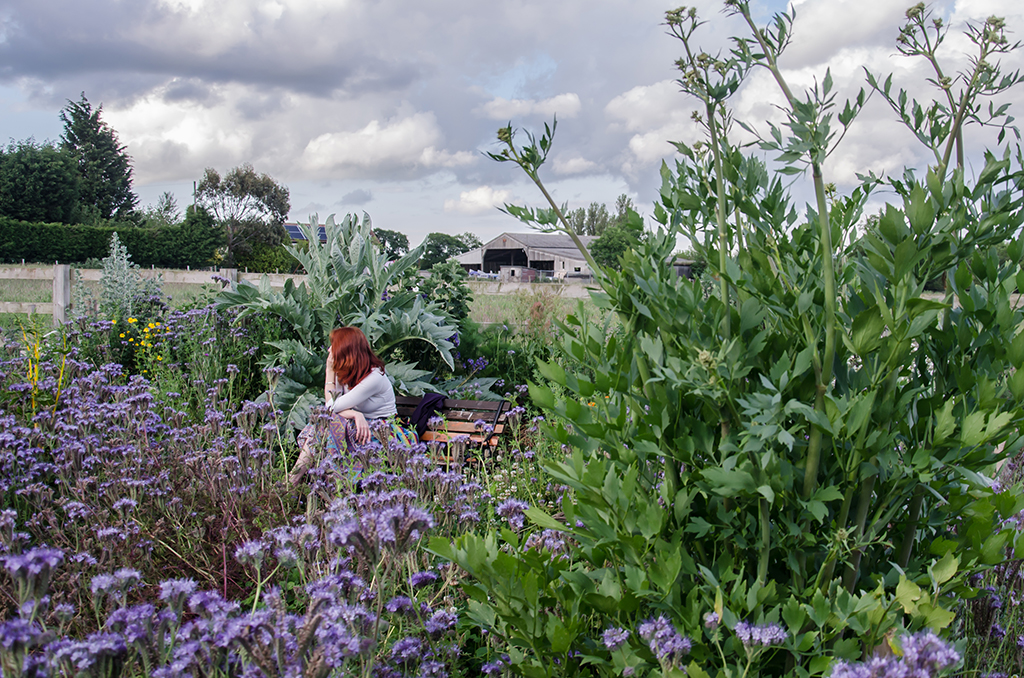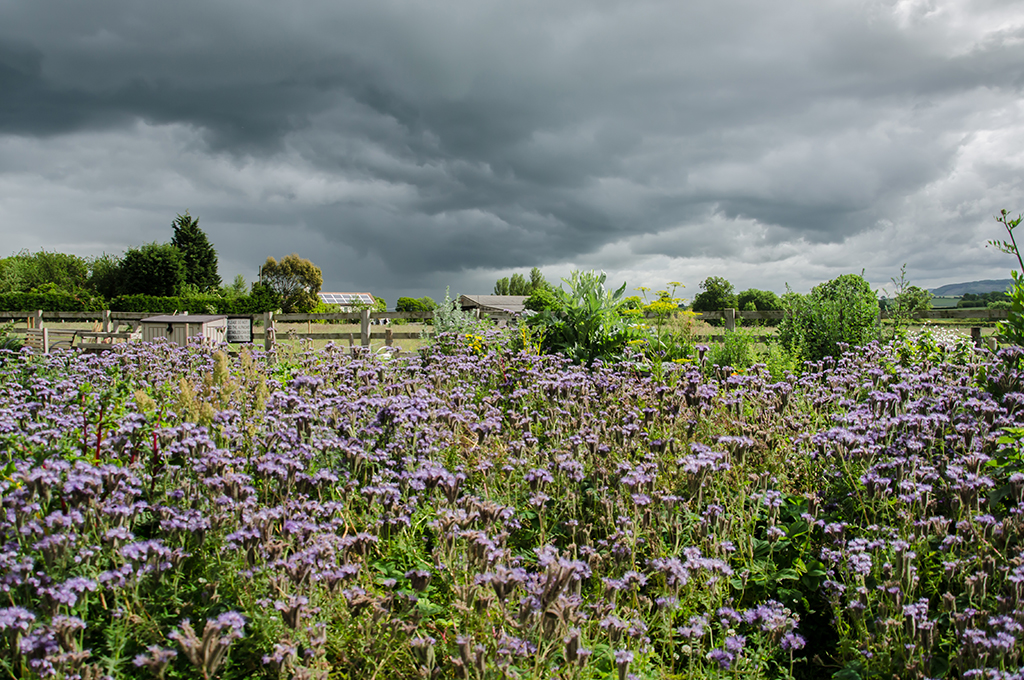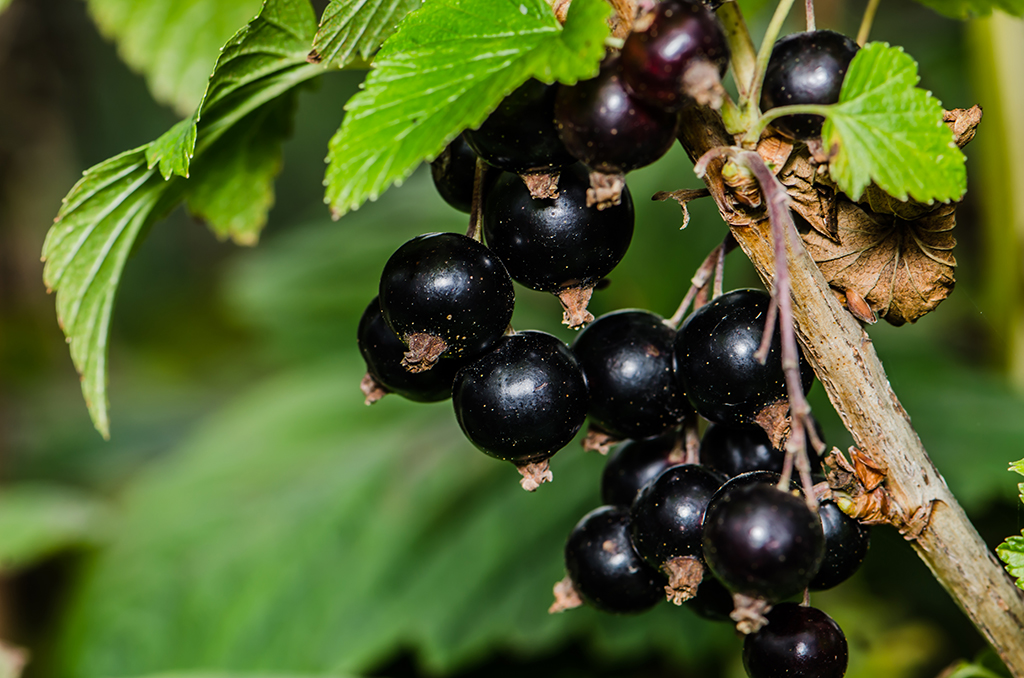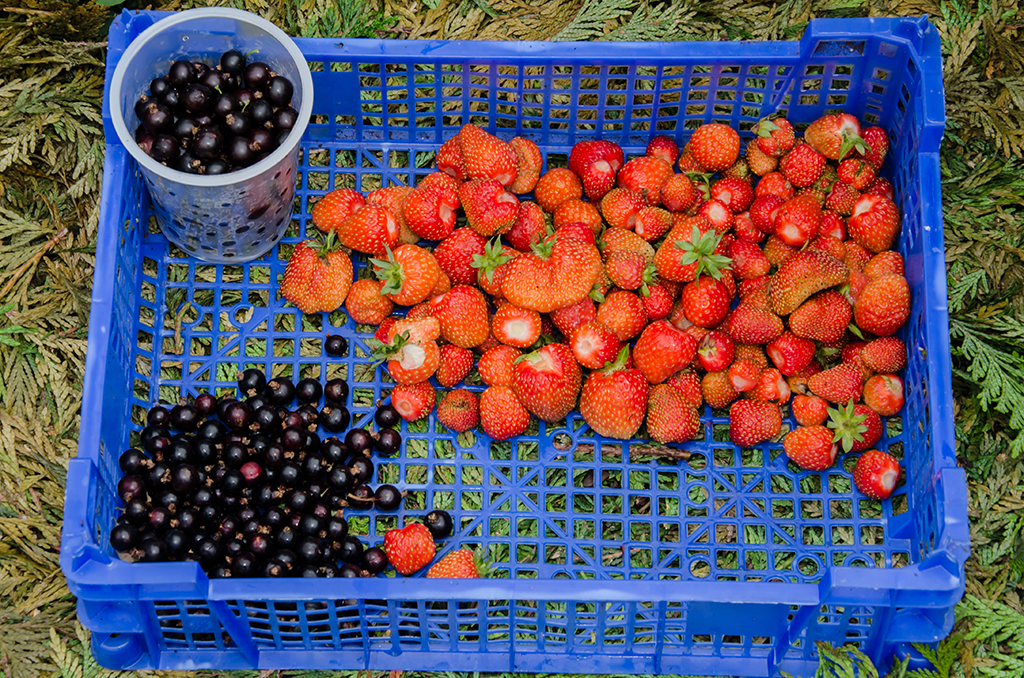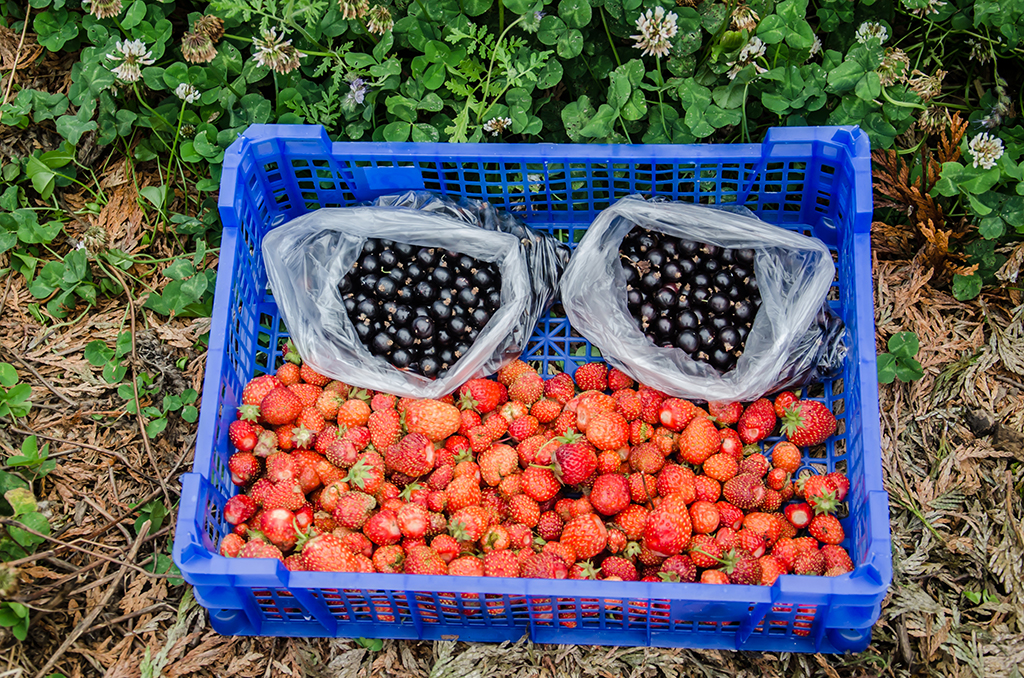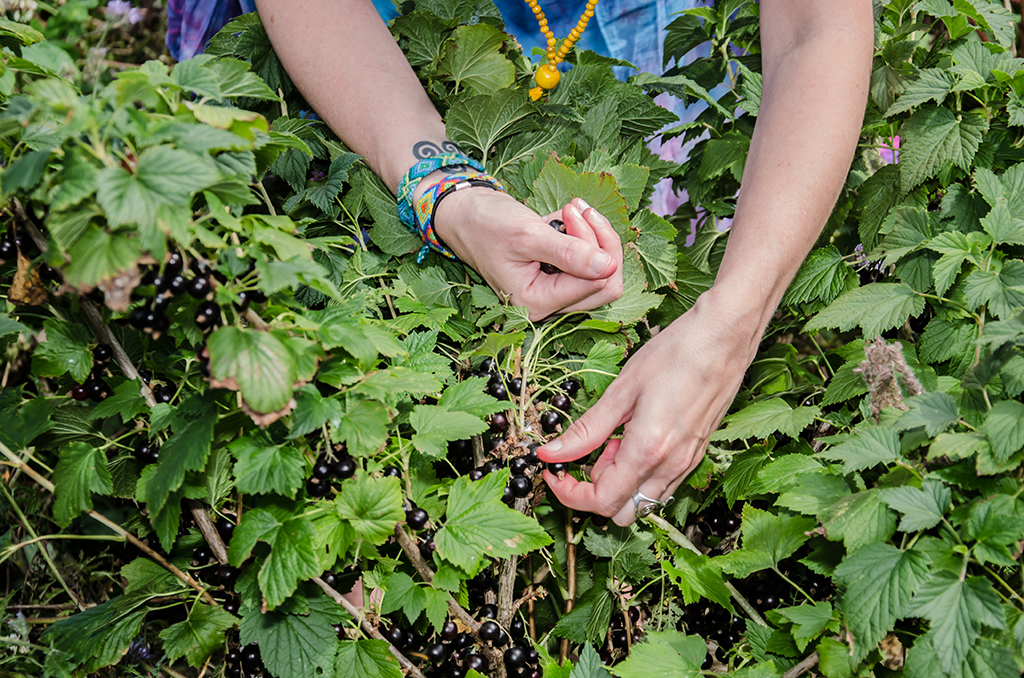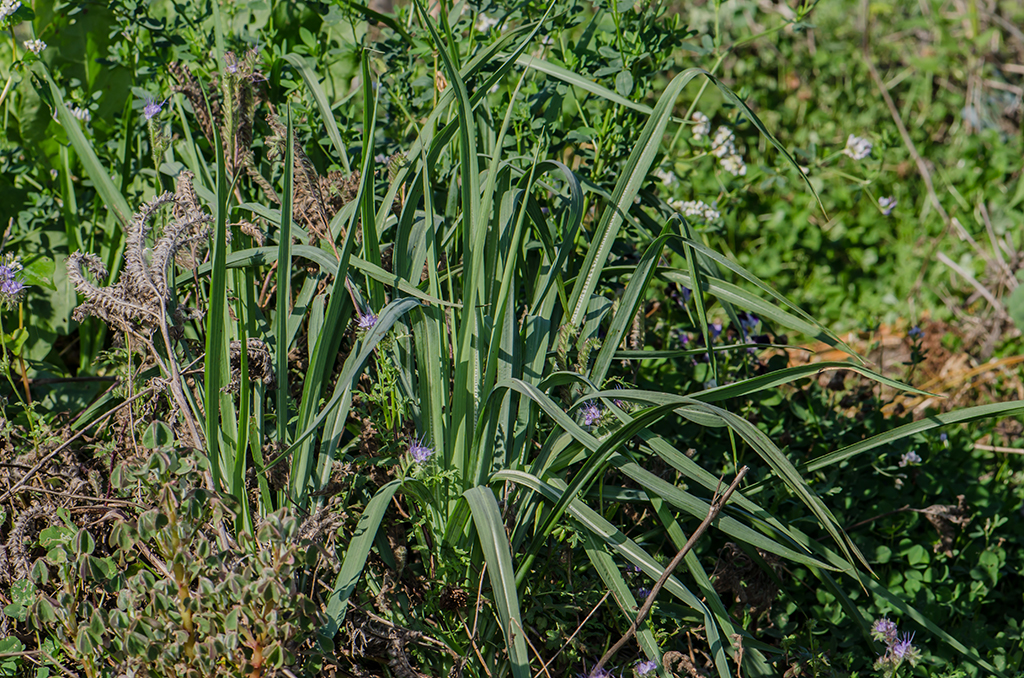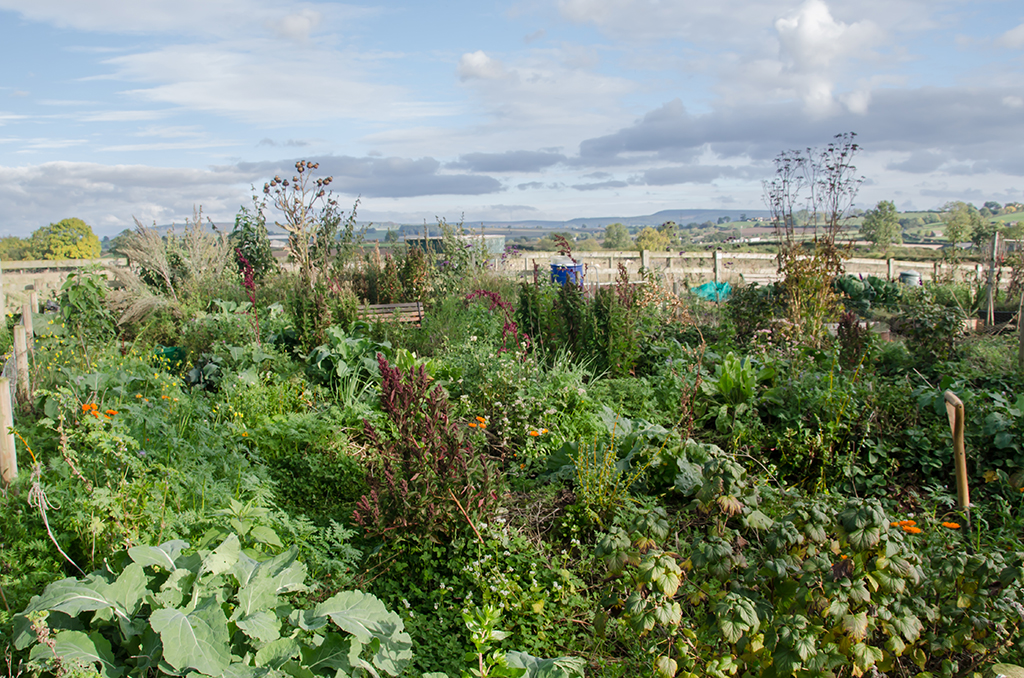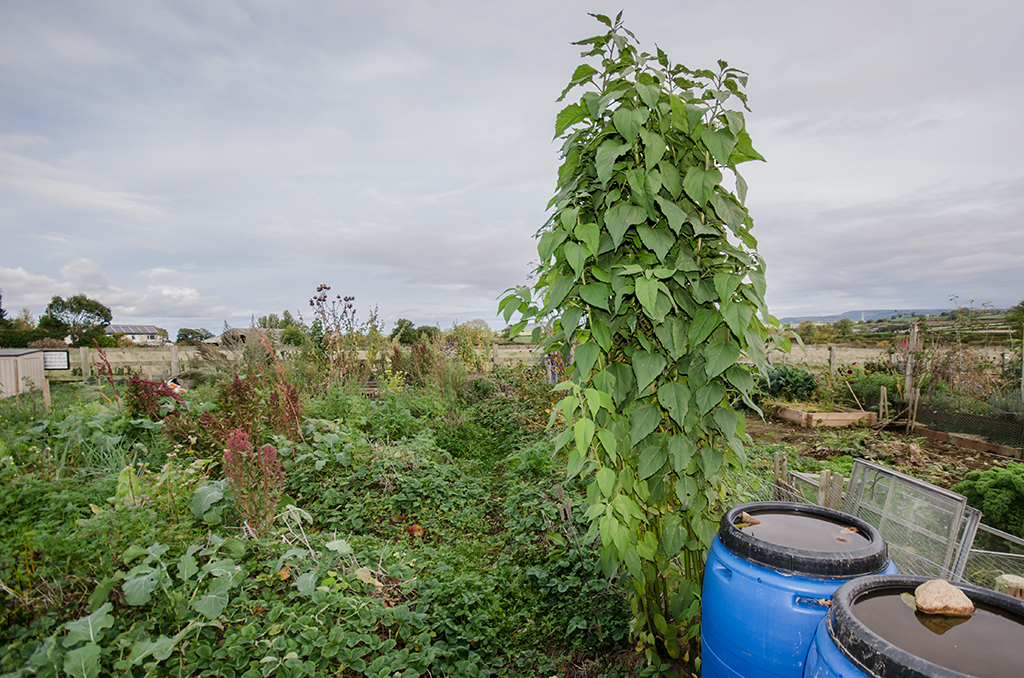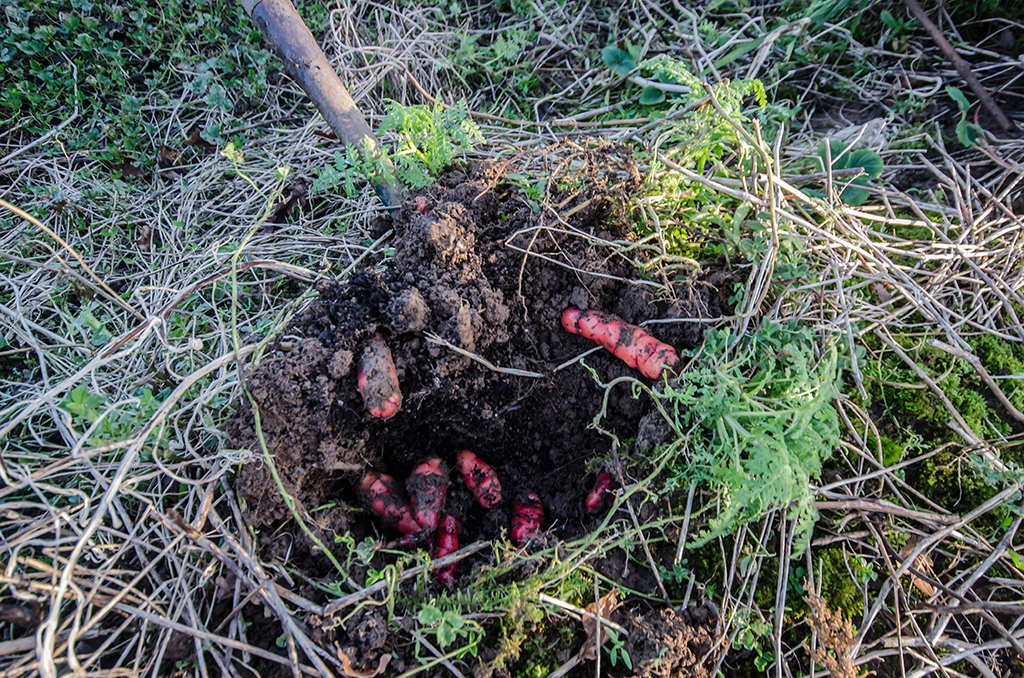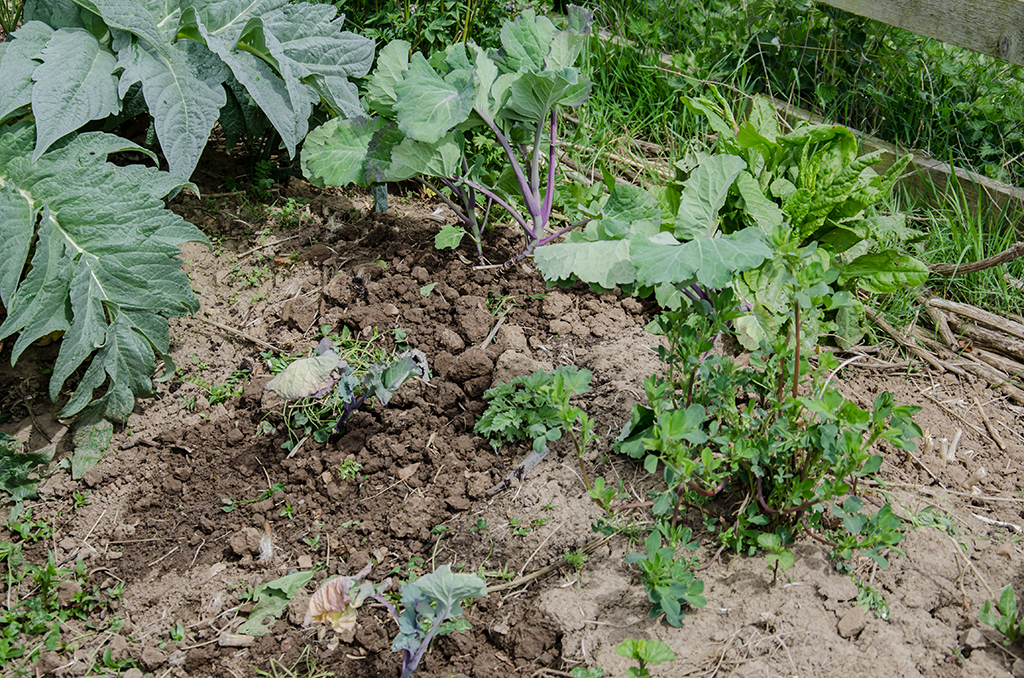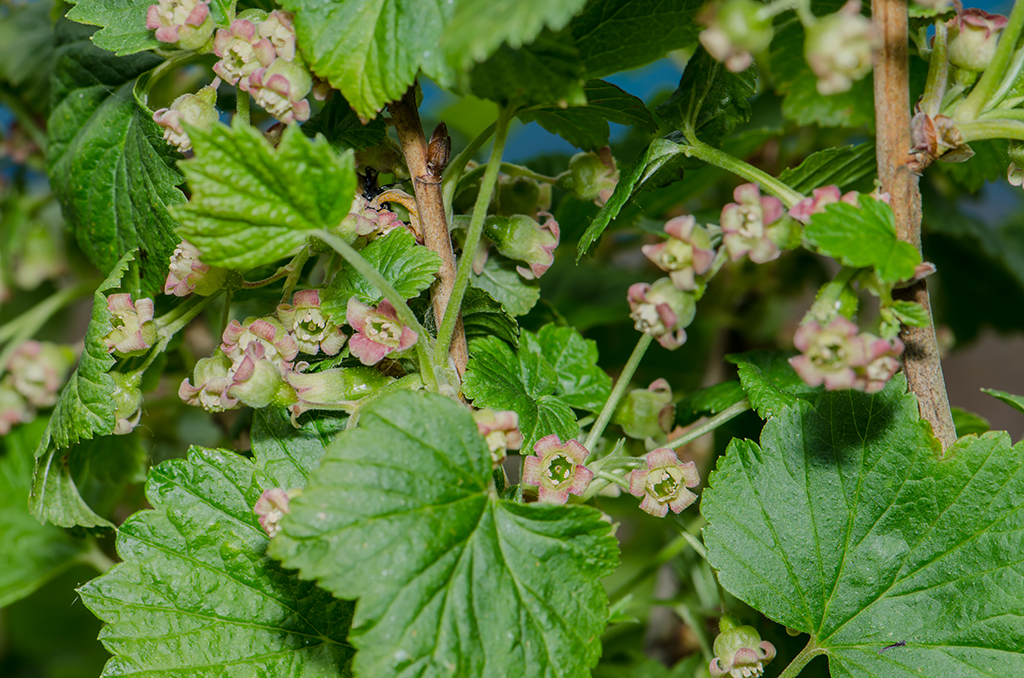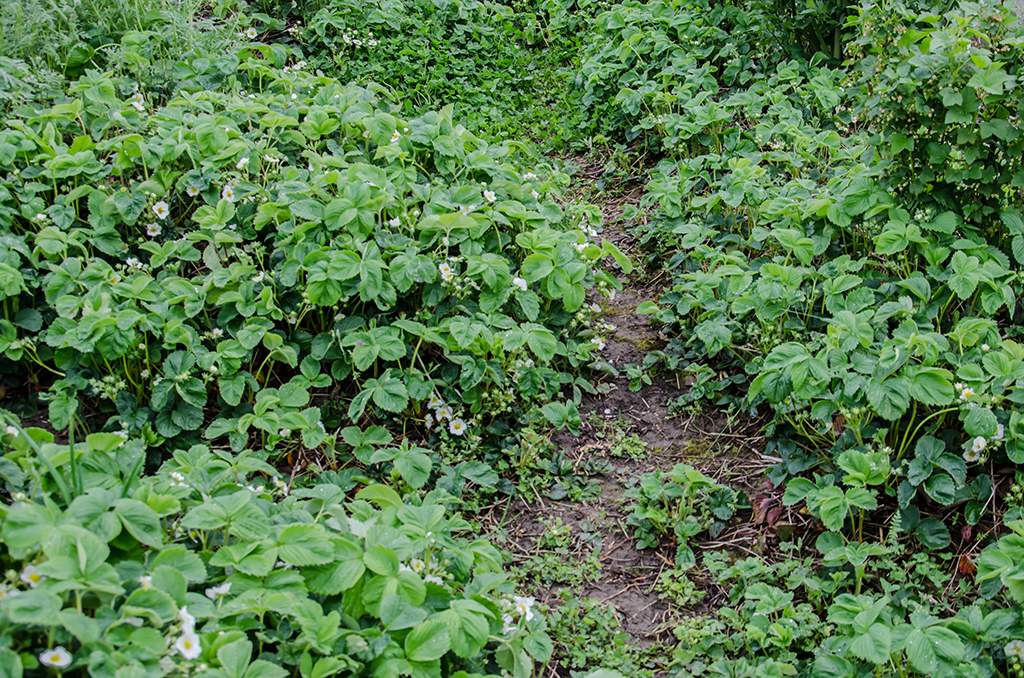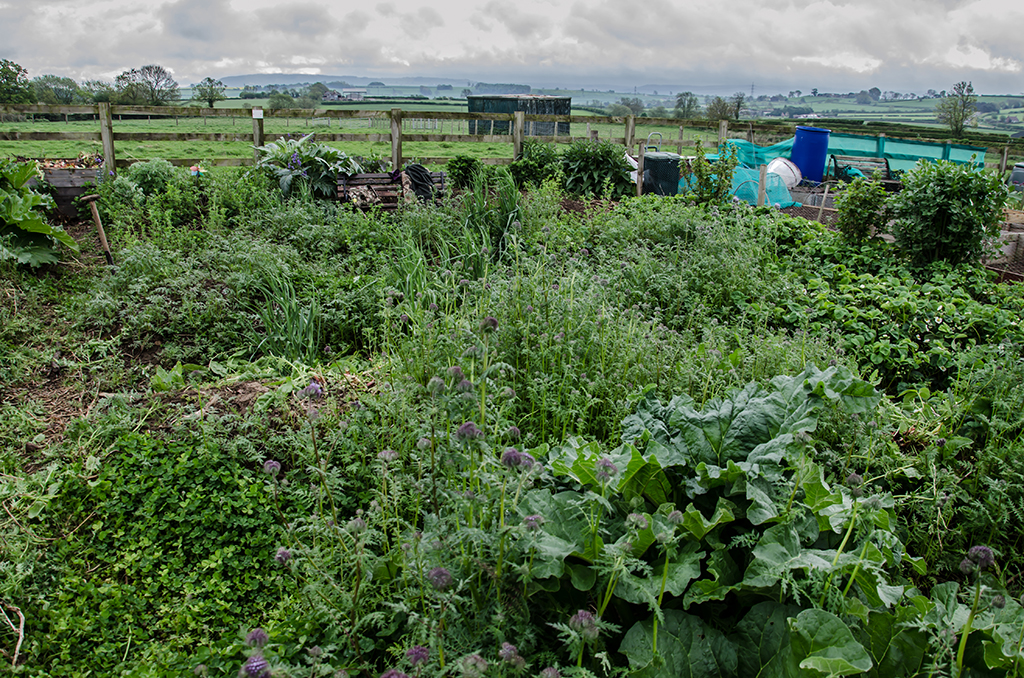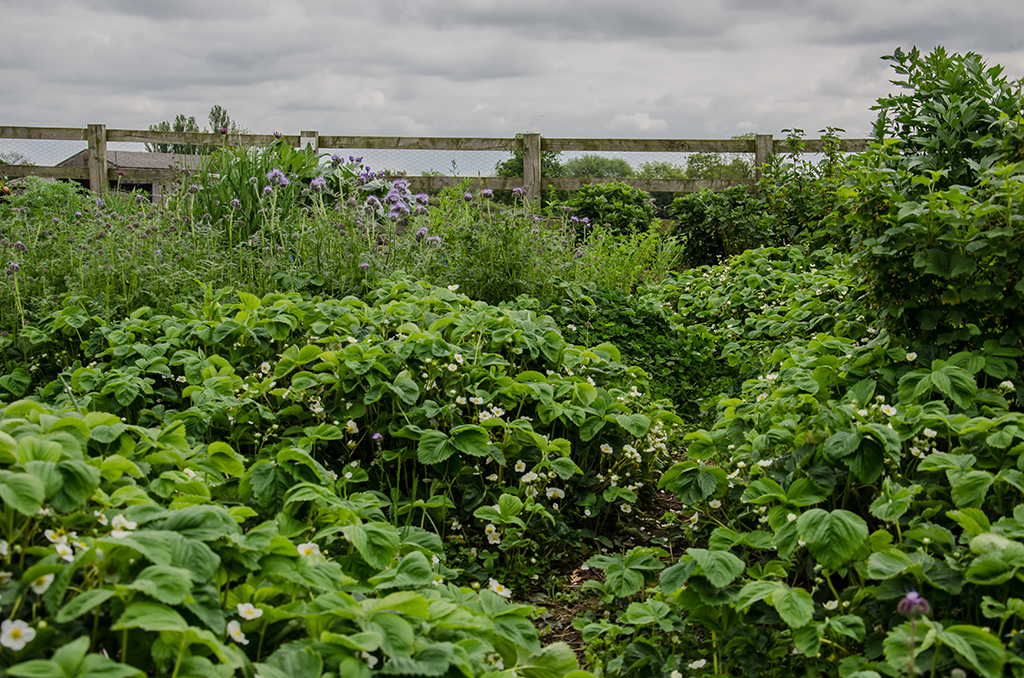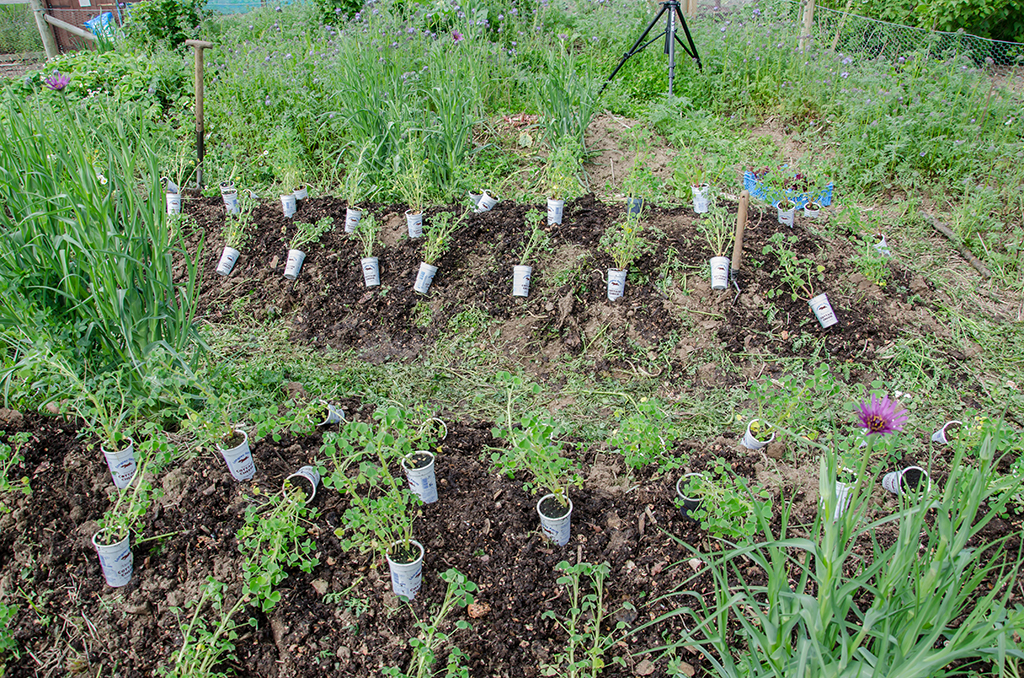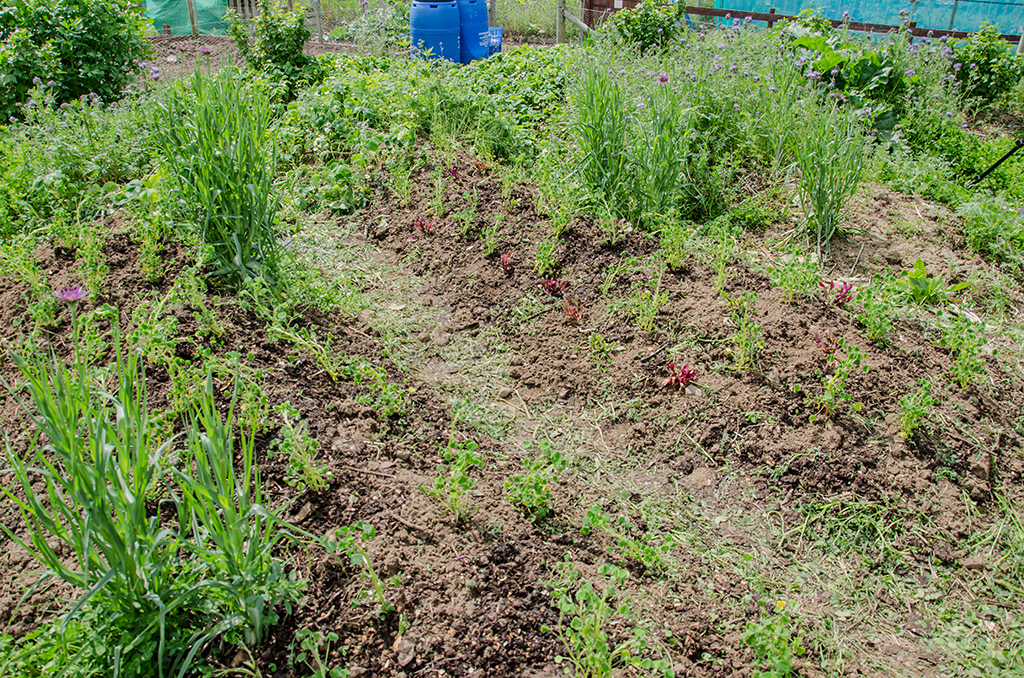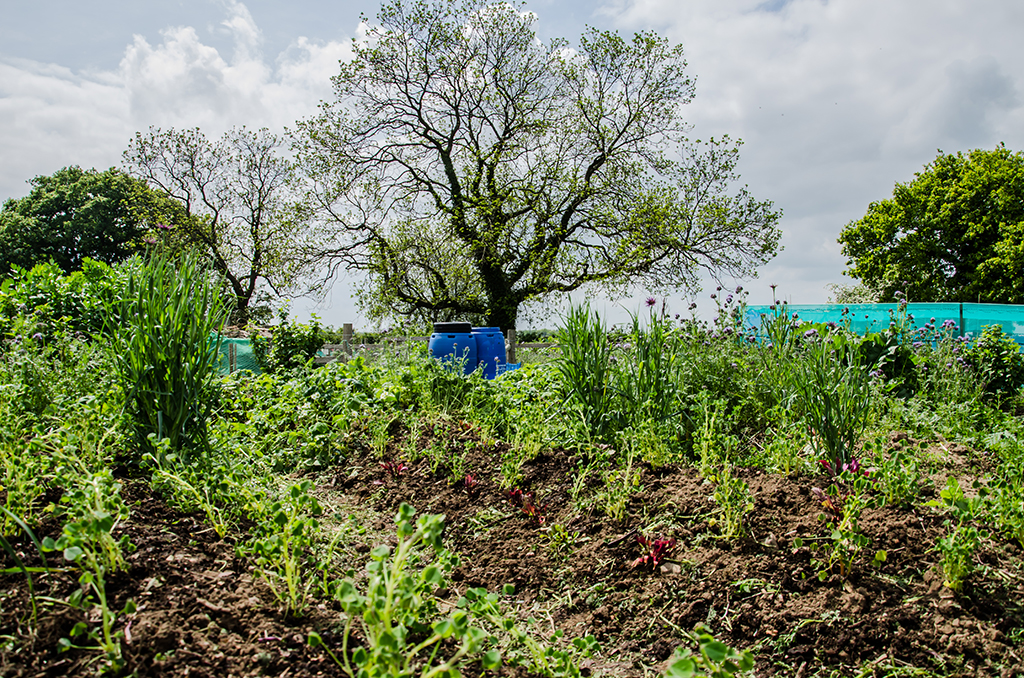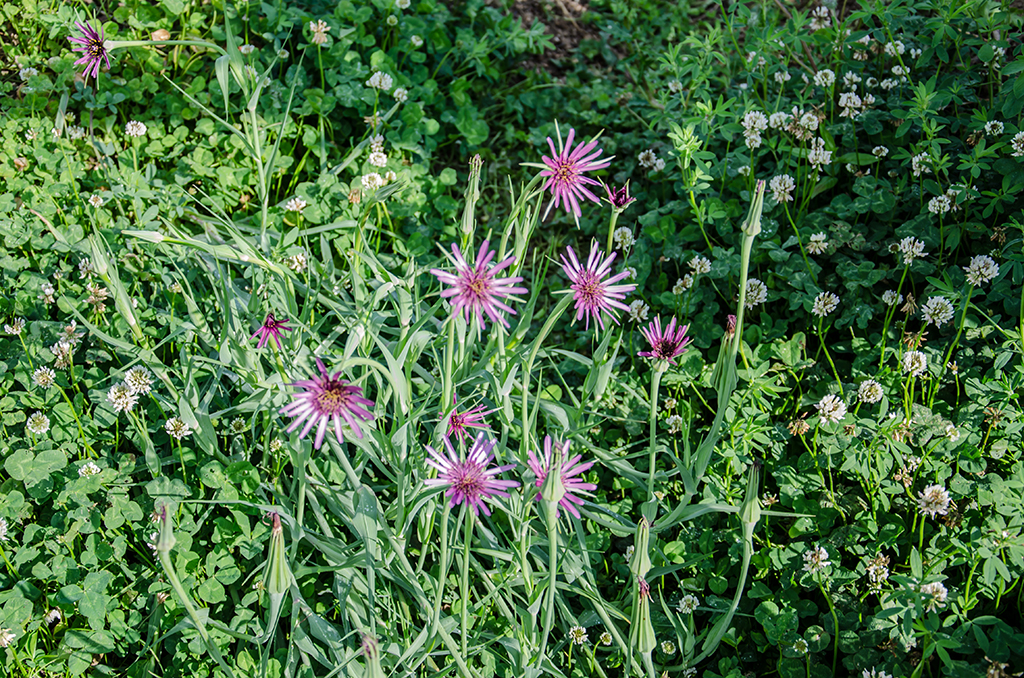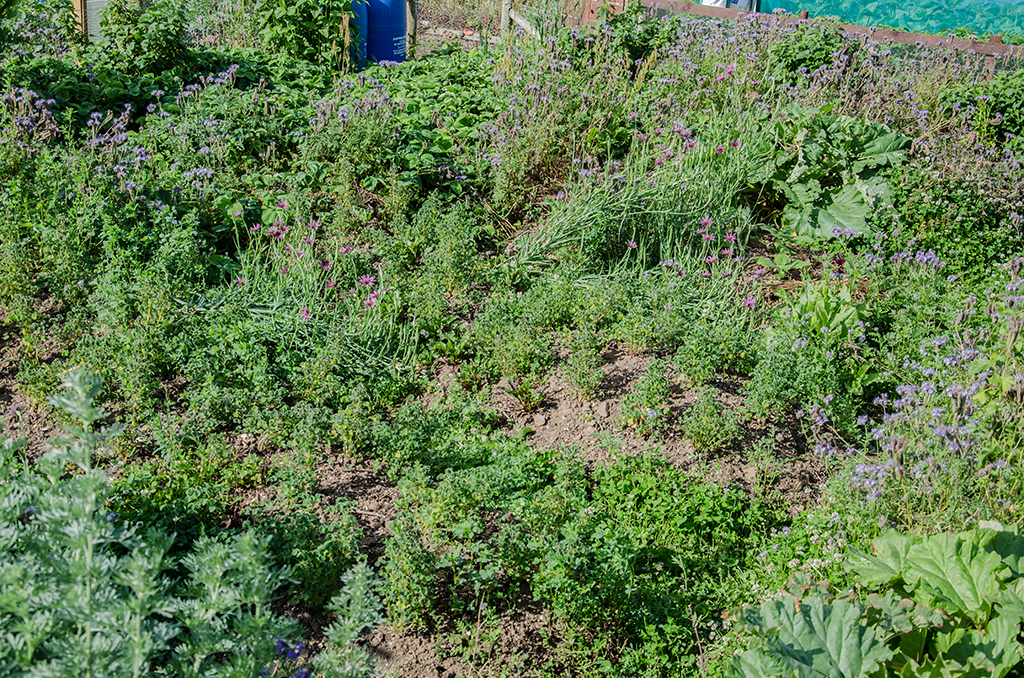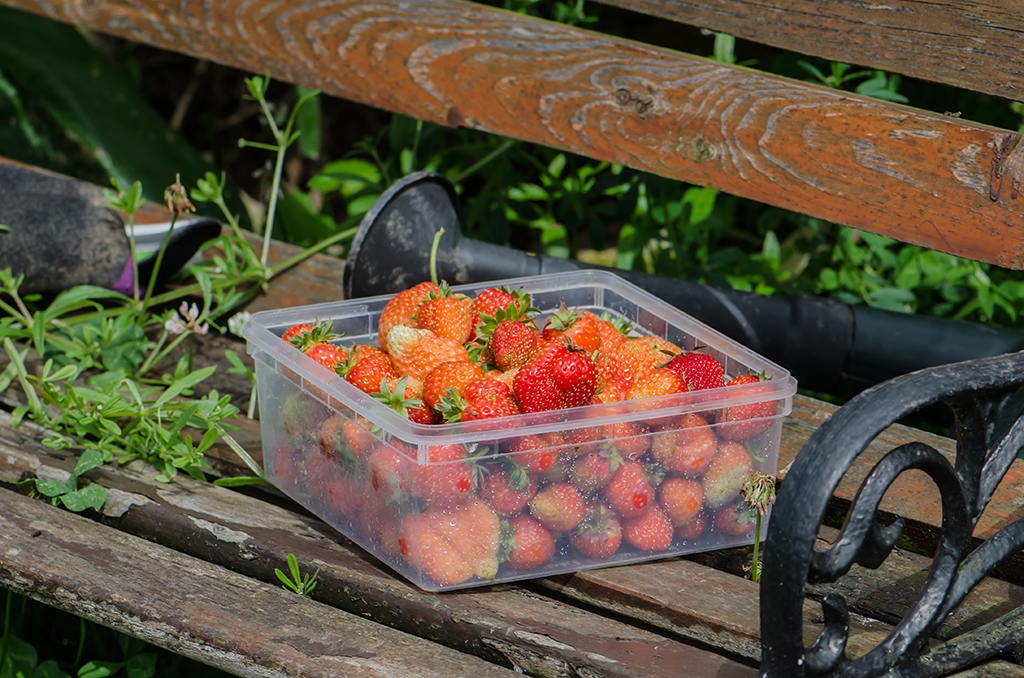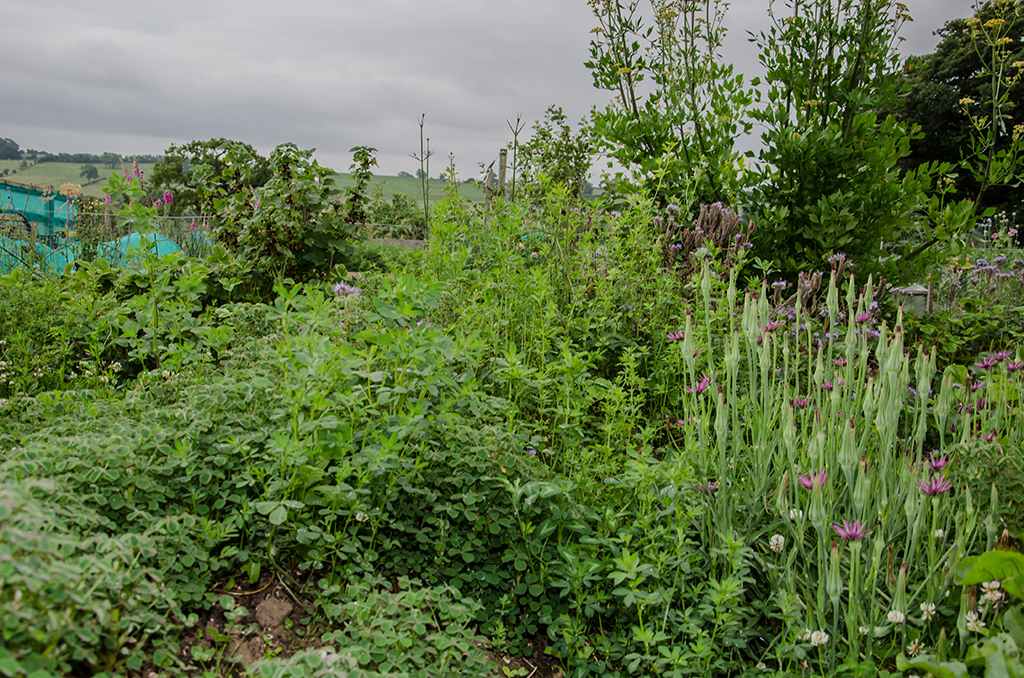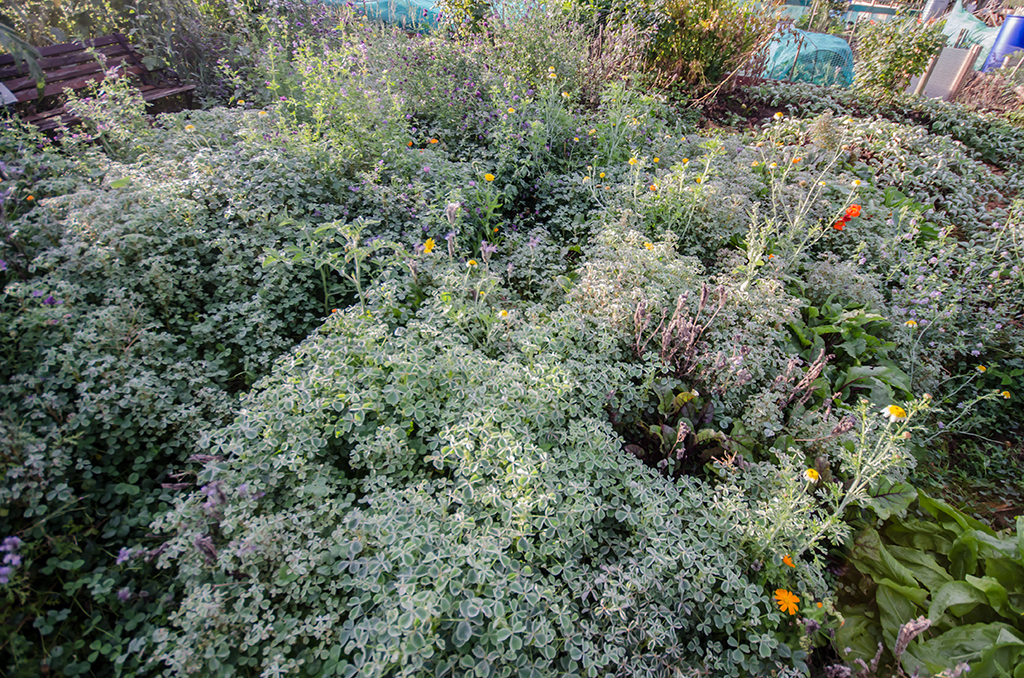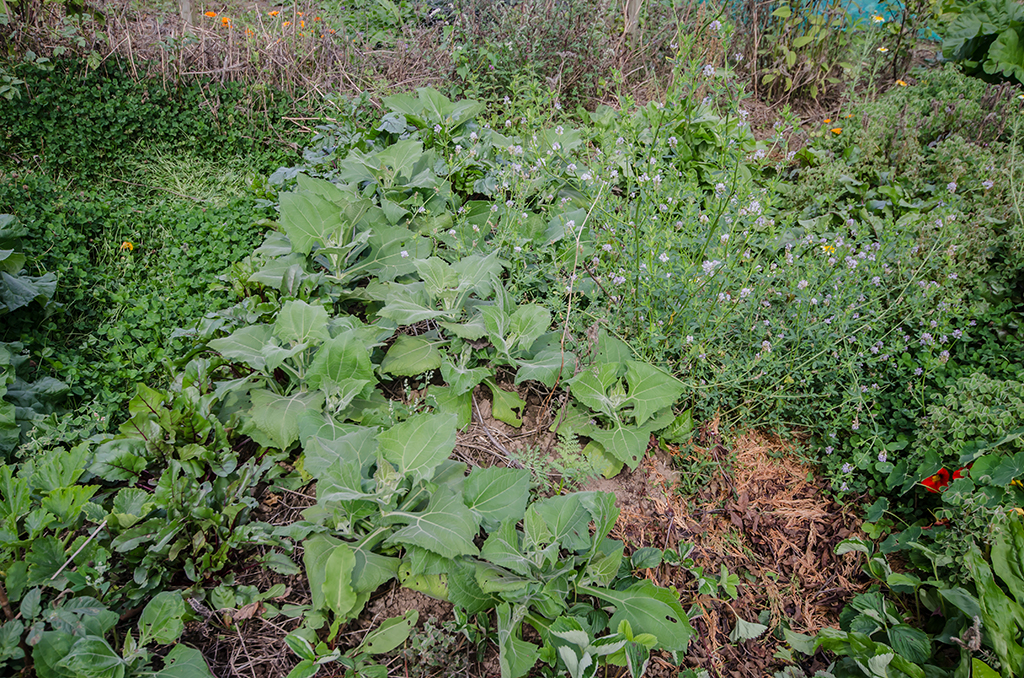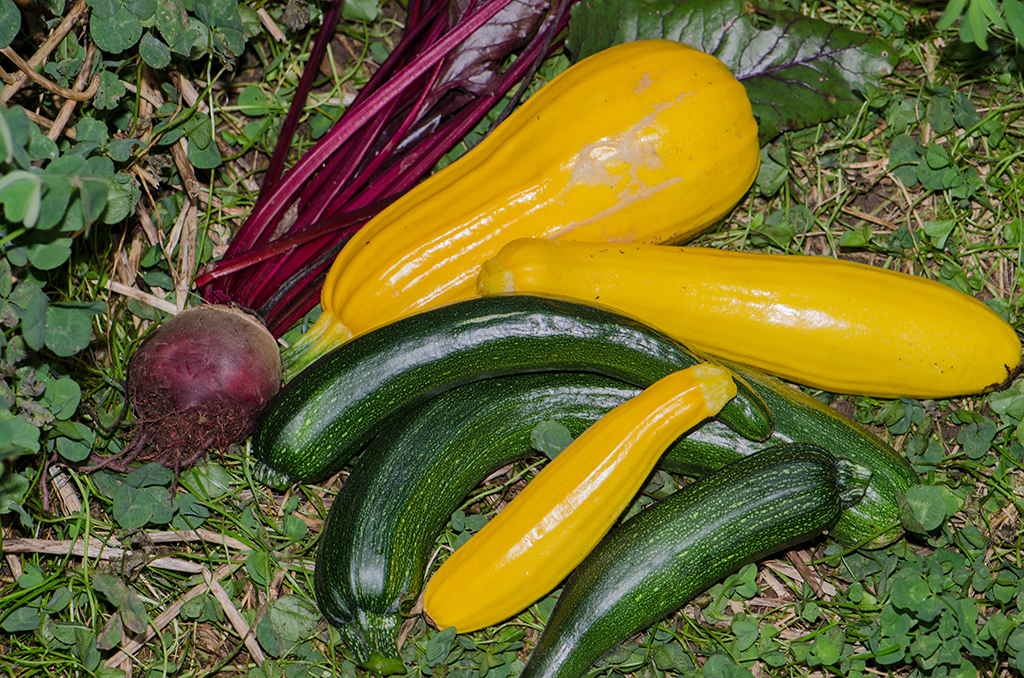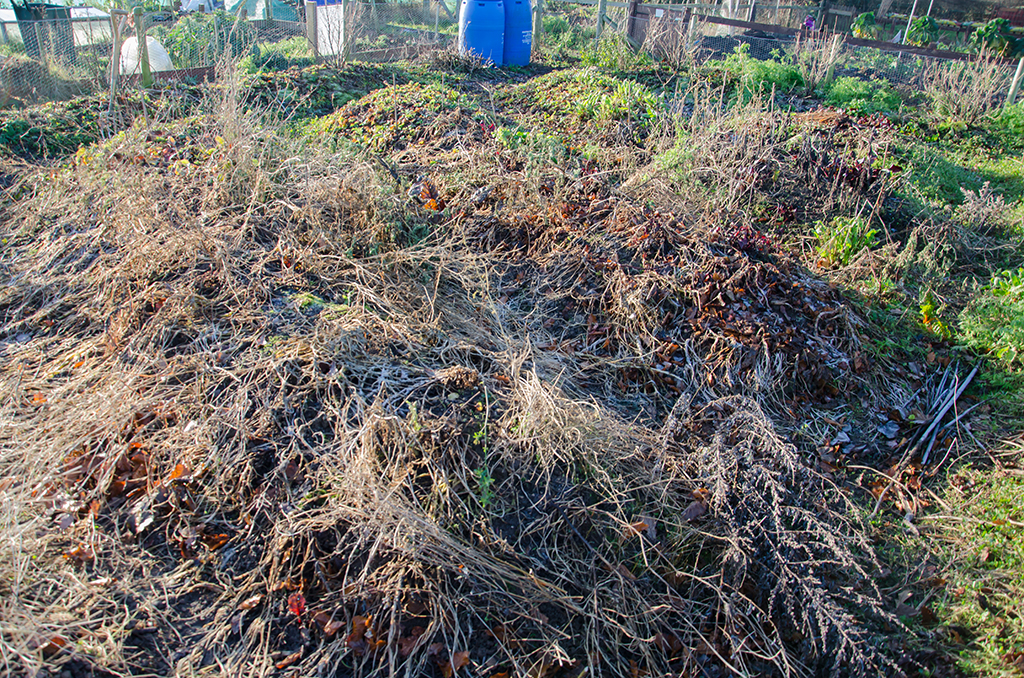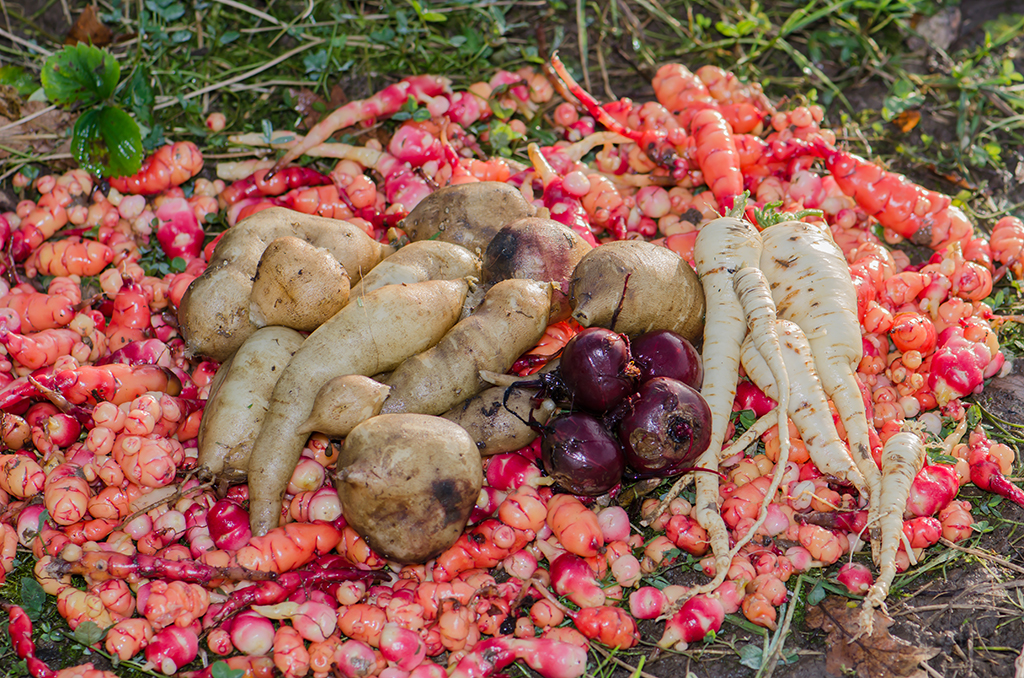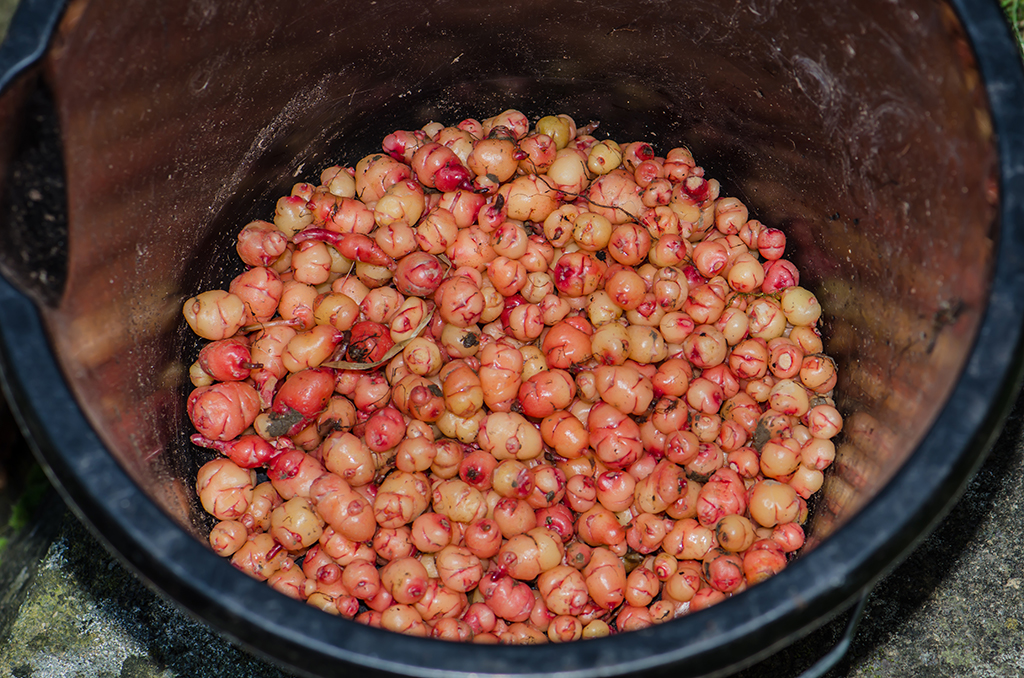Allotment Garden Design Re-Evaluation

January 2020
It’s now been a couple of years since driving away from the allotment site for the last time. It was sad to leave behind the plot where over the course of four years the soil had changed from heavy clay to one full of organic matter which you could dig into with your hand. At the same time, I was so pleased to be leaving behind all the politics that had grown tall across the allotment site, along with the different rules for different people depending on who you got along with.
That said for myself having an allotment plot taught me many things that have helped improve both how I design gardens and how I now garden. The allotment was also a great place to learn about lots of plants that I never had the room to grow before.
Strengths
From the very beginning of the design, the main aim was to create a low maintenance design. This is something that I achieved. Most of my time at the allotment, once it got established, was sat reading permaculture books on the bench whilst my fellow allotment plot owners struggled to dig over their plots and as a result, had to water most days during the drier weather. After the first year, I never dug and the only time I watered was when I was planting out to give the plants their first drink.
Weeding did become an obsession especially the period after I had finished creating the main beds. Digging and moving the soil provided a great opportunity for seeds that had been dormant in the soil to germinate. If I had known what was about to happen with the cover crops I would not have been so concerned. The volume of cover crops the first summer was mind-blowing. For several weeks I could hardly get onto the plot, the buckwheat was so high I could no longer see the paths.
During this time the local bumblebee population must have had the best summer in many years. Bill, both a friend somebody who has been a mentor for me from the age of thirteen used to farm this land around fifty years ago. When he visited the plot, he could not believe the number of bumblebees feeding on the buckwheat and phacelia. Even back then before modern chemical agriculture had taken hold he had never seen so many bumblebees of all shapes and sizes in one place at the same time.
It was a surprise for me how well the cover crop grew this first year and was probably the making of the plot for the next few years. The amount of organic material that went back into the soil must have gave the soil in the newly created beds a phenomenal boost.
In the following years, I didn’t allow the plot to be taken over like that again but I had such a variety of flowering plants that I always had a lot of bees feeding at the plot.
Another great strength I got from the plot was been able to grow so many different varieties of plants and to be able to learn from them.
Weaknesses
Not living close to the allotment was a major weakness in this design. This prevented me from popping to the allotment on a weekday evening, leaving me to cram any tasks into a weekend. During the final year, this changed due to buying a house, my weekends were needed in the house so I had to call at the allotment after work during the week.
I also missed watching the plants in the garden grow. From one week to the next the plot would suddenly change. If I missed a weekend over the summer I would not even recognize the plot at times.
It was also difficult to have to rely on my partner having to water during the initial setup of the design and to have her harvest the fruit during the week when she had other things to do.
Another weakness was my over-enthusiasm for trying to grow so many things. I have a passion for plants and just love to grow as many as I can. Often many plants would get crowded out, this happened with some gooseberry bushes that I forgot I planted due to having so many plants at once.
Opportunities
This design has taught me many things about designing gardens that I could never learn from watching videos and reading books.
The best way to get to know plants is to grow them. With the allotment, I got to grow and learn about many plants that were new to me. This new knowledge now helps me to see niches in gardens where I now know certain plants would fit in well.
I should also have added a sub-design to this permaculture design around soil fertility. I did notice that as the years went on the soil improved in structure but was lacking infertility. Having another design stacked onto this one could have provided a solution for what was lacking.
Challenges
At one point the whole allotment site was taken over by rats, due to my plot having so much cover, the rats dug into the soft soil of my beds and ate most of that summers strawberry crop. In the end, I had to chop all the strawberries plants back to open up the allotment and fork the beds to cave in the rat tunnels. The rats eventually were got under some sort of control but were always something to be looking out for.
It’s worth mentioning again, the location of the allotment site to my own house was a half-hour drive. I would never take on any garden so far away from where I was living. Even with my partner living a short walk away from the allotment site, it was myself who was doing all the work and I missed out on so much that happened on the plot.
It also became very frustrating having to drive carloads of plants to the allotment.

Re-evaluation – The Story in Pictures
June 2013
Arrival at the new allotment site.
After some time spent observing the site, the next thing was to put up a rabbit wire fence. It was through these observations that I noticed several rabbit runs heading over the allotment site in many directions indicating a healthy rabbit population. Keeping the rabbits out of the plot was going to be a priority. A fence was also a good place to start so I would not have to be walking over the beds if I had at first started with them.
June 2013
After removing most of the weeds from the plot followed by marking out the beds, the landscaping work started with digging the soil out from the paths and laying it onto the beds.
Before planting up the beds the heavy clay soil clumps needed to be broke up. Once this was complete I planted a few plants I had been growing at home into the beds and sowed ample amounts of cover crop seeds. The cover crop seeds we planted were, buckwheat, phacelia, radish and clover (see appendix).
We also planted a few vegetables in the section of the garden which was to be left for landscaping until phase two of the design.
July 2013
Throughout July all the beds started to grow well. The cover crops had germinated very well and soon gave the beds the shade I was hoping for. The plot was in direct sunlight until late evening so any extra shade would help to keep the moisture in the soil during the long sunny days.
August 2013
Late July and into August we had a fair bit of rain. The cover crops went from knee height to shoulder height in no time at all. It was at this point that I had to pretend to the other allotment holders that I had expected my plot to be looking like it currently did, and that everything was going to plan. In truth, I was blown away by how much everything had grown, to the point that I could no longer find the paths to walk along. The thing that amazed me most was the number of bumblebees that came to feed on the buckwheat and phacelia flowers each day. I’ve never seen as many and will probably never see so many again and if nothing else seeing so many bumblebees was worth all the work and cost I had invested into the plot so far.
October 2013
With so many bumblebees feeding at the plot each day I was reluctant to cut any plants back until they had stopped flowering. This took me into October but it was such a pleasure to see the bees I didn’t mind having an allotment plot that looked so overgrown. With the colder weather, I dropped the whole of the cover crop and laid it over the beds giving them a good mulch for the winter months.
We also harvested a few vegetables from the area that we had yet to landscape. In September I sowed a cover crop of lucerne (see appendix) across this whole area which by October was well established.
November 2013
November I planted out the strawberry plants that I had been growing at home.
It was now time to start phase two of the design which was to add a large bed, an area for composting and an area for seating. The lucerne cover crop was dug into the bed adding extra food for the soil microbes. I also brought a few bags of conifer hedge clippings to spread over the paths.
December 2013
Come December the plot was looking very different from a few months earlier, the bumblebees were long gone but by far from forgotten.
January 2014
After a few weeks of heavy rain, it was a great feeling to arrive at the plot and see the paths standing in water. This was part of the design, to keep plants from standing in water on a flat site we added raised soil beds to keep the plants higher up and out of the water whilst letting the water flood the paths and in the process holding the water on-site and allowing it to slowly drain back into the ground.
In February I added six fruit bushes to the plot, three along the front edge (blackcurrant) and three down one side of the plot (chuckleberry).
May 2014
By May the three chuckleberry and three blackcurrant bushes had come into leaf. There were also several chard plants that had survived the monstrous cover crop growth of last season and were now happily growing away in their newfound space. The cover crop that was left as a mulch over the beds had now mostly composted into the soil. Already the beds were greening up from the germinated seeds of these cover crops.
I was also gifted a garden bench that a friend had bought for a few pounds in a local auction.
June 2014
Heavy rains in June and once again we had flooded paths. This was great because when we got to the plot a few days later everywhere else was dry but we had held onto our water.
We had been slowly adding a few plants and tubers here and there to the plot, things like rhubarb, onions a few courgette and squash plants, some pink fir apple potatoes and some artichokes.
Last year's cover crops were also growing well again.
July 2014
July saw me return from completing my PDC with added enthusiasm, along with a few more plants: Bocking 14 Comfrey from Ragmans lane farm the location of the PDC, several oca plants from Shift Bristol's center, and two cuttings from Charles Dowding’s Taunton Deane kale. Charles brought the cuttings along to the Shift Bristol open day where he gave a talk on no dig gardening, we went along to this event during a day off from the PDC.
I also went and gathered several large bags of the local wild comfrey leaves and mulched the beds with these. By now the beds were looking well with a mix of cover crops providing food for the wildlife and many food crops for ourselves growing altogether.
The garden bench was now getting lots of use, the wildness of the garden made for a nice place to relax in and read.
August 2014
We are now starting to take a weekly harvest home from the allotment, courgettes, chard, pink fir apple potatoes, onions, garden peas, squash. Harvesting has become something of an adventure, having to forage around to see what is growing where. The whole plot is by now looking quite wild to the untrained eye, for myself, it was looking great.
September 2014
More harvesting and lots of late summer colours mixed in with lots of time spent at the plot relaxing. Not very much work to do other than pull a few weeds here and there.
October 2014
Lots of harvesting still taking place at the weekends. Earlier in the year, I planted out some marsh mallow, the plant not the sugary treat that makes kids go bonkers around campfires on an evening. I dug up these plants to harvest the roots then planted them back into the ground.
November and December 2014
Once again we were letting the plants compost where they grew returning their nutrients back into the soil. Even at this time of year it’s interesting to have a wander around the plot to see what's going on.
February 2015
Time to add a few more fruit bushes to the other edge of the plot which was part of the first design. I also planted a few honeyberries in one of the other beds.
March 2015
The garden is looking a little sad but as the month goes on the first new leaves start to show on the fruit bushes bring with them hope for another plant adventure.
April 2015
As if from nowhere the garden suddenly wakes up and before the months is out an abundance of green is on show across the plot. The strawberry plants have quickly taken over the whole of the side where the three blackcurrant bushes are growing forming the ground cover that was planed into the design nearly two years ago. The bocking 14 comfrey has survived and seems to be growing well.
May 2015
It's looking like its going to be another bonkers year for plant growth in the plot. Last year we had a few phacelia plants growing over the site, this year they are everywhere and already they are getting frequented by many different types of bees. The strawberry plants keep on getting bigger, the comfrey is in flower, a favorite for the bumblebees.
June 2015
Once again our plot is the talk of the allotment site, a couple of years ago it was in a sea of white from the buckwheat flowers, this year it’s a sea of blue from the phacelia flowers. All these flowers are providing an excellent backdrop for relaxing on the garden bench sat next to the cardoons whilst surrounded by the constant buzz from the hundreds of feeding bees.
July 2015
July brought with it our first fruit harvest with several kilos of blackcurrant and chuckleberries along with kilos of strawberries. Sweet times.
September 2015
Among the tall plants such as the lovage, cardoons, marsh mallow, the wormwood and mugwort, the seating area now such a lovely place to relax. The Aztec spinach and orach provide new tastes to try out.
At this time of year the garden is a magical place to be.
October 2015
A harvest of pink fir apple potatoes grown from the smaller tubers from last year's crop. Lots still growing at the plot and like the rest of the year, very little work to do.
December 2015
Last year the oca plants grew a few small tubers that I used to plant for this year's crop. Now it’s time to get to eat some.
May 2016
Jumping right into May, I’ve sown an area with German chamomile seeds, the flowers to be used in teas. I've planted out several cuttings taken from the original Taunton Deane perennial kale plants. The strawberry plants, fruit bushes and comfrey are all in heavy flower. I’m planting a couple of beds with oca, interplanted with beetroot which will be harvested before the oca takes over. I’ve got large patches of clover growing over some of the paths. It’s looking like it’s going to be another good year.
June 2016
The star-shaped flowers of the salsify add a little magic to the garden, I’ve added several yacon plants and the same of Chinese artichokes. Everything is growing larger than ever.
July 2016
With more strawberry plants came a heavier crop of strawberries. The blackcurrants and chuchleberries produced even better than last year. July was a good time to be in the garden.
August 2016
Throughout the rest of August, the pattern was much the same with everything growing better than ever. The oca was following on from the strawberry plants with its own take over of two beds, slowly growing further and further out.
September 2016
As most plants started to slow down the oca began to grow more and more, I was once again unable to walk along some of the paths. Of course, I left them to grow where and how they wanted.
We had been and were still harvesting lots of courgettes, with a few beetroots and plenty of leaf crops.
December 2016
Towards the end of December, it was time to see how well the oca had done. The results were good, plenty of tubers of a size worth eating and more than enough small tubers for growing next year's crop.
The yacon also provided a good crop, it nearly didn’t make it off the allotment site due to having such a sweet fresh taste when eaten raw on a cold winters day.
I also gathered a few parsnips, Chinese artichokes, and beetroots.
2017
2017 my focus moved from the allotment to moving into a house we had just bought, we would be giving the allotment up at the end of this season and the plan was to move the fruit bushes and other plants into the yet to be designed garden at the new house.
I still grew oca at the allotment during this year, once again devoting two full beds to it.
During the fruit picking season, disaster struck with a sudden take over of the allotment site by rats.
For us, they dug holes into the soft soil of the raised beds. They ate any strawberries within reach. They also got into the compost bin. Due to my plot having such a great habitat for wildlife I had to chop all of the strawberry plants down removing a lot of cover from where the rats were making their home. I was having to fork the beds to cave in the underground holes and runs. I had to keep turning the compost heap to discourage them from building nests. I certainly got my wildlife garden.
Slowly the rat population across the allotment site was reduced but the need to fork the beds and keep disturbing the compost heap was a weekly task. Cutting back the strawberry plants helped by removing a good food source for the rats and changed the dynamic of the plot by suddenly making half of it open.
In 2017 the whole of the allotment site was changing, there was a lack of interest with many people doing nothing and letting nature take over their plots. Other people saw an opportunity to take over two plots with one person taking over 3 plots. This was the beginning of “super allotment plots”. As with most superpowers, this caused jealousy and lots of conflict between plot owners.
Most weeks I would spend at least one evening working at the allotment plot, making sure it was kept free of weeds and that everything was growing well. During this time we also had several raspberry plants wander into our plot from the now vacant plot next door. These provided a few extra kilos of fruit as a leaving bonus and also some extra plants to take away for our next garden.
After removing most of the bushes and plants and moving them to their new home, see the “forage garden design”, I dug up the best oca crop yet at the allotment making sure I gathered lots of the smaller tubers for their next life in the “kitchen garden design”.


